
Inspirations
Explore the elevated life in the mountains. This content debuted in 2015 with Alpine Modern’s printed quarterly magazine project.
Oaxen Slip Restaurant — Stockholm
Our good friend and culinary expert, Colin Kirby, recommended we lunch at Oaxen Slip while visiting Stockholm this summer. The weather was perfectly sunny but even in the middle of summer, there can be a chilled breeze off the water. Fortunately, the restaurant provides cozy wool blankets to keep you warm while you dine. We enjoyed a splendid meal and some of the highlights include smoked shrimp, new potatoes, and fried cod. It's a restaurant not to be missed on your next visit to Stockholm.
Introducing Alpine Modern’s New Nordic-Alpine-Inspired Menu
With worldly Chef Ellory heading the kitchen, seasonal ingredients shine in simple, clean food at the Café
We recently introduced you to our new executive chef, Ellory Abels. After she had helped to grow the San Francisco catering company Green Heart Foods, the Texas native traveled the world in search of culinary inspirations. The Culinary Institute of America graduate visited eight countries, where she collected different spices and cooking traditions she now integrates into her own kitchen.
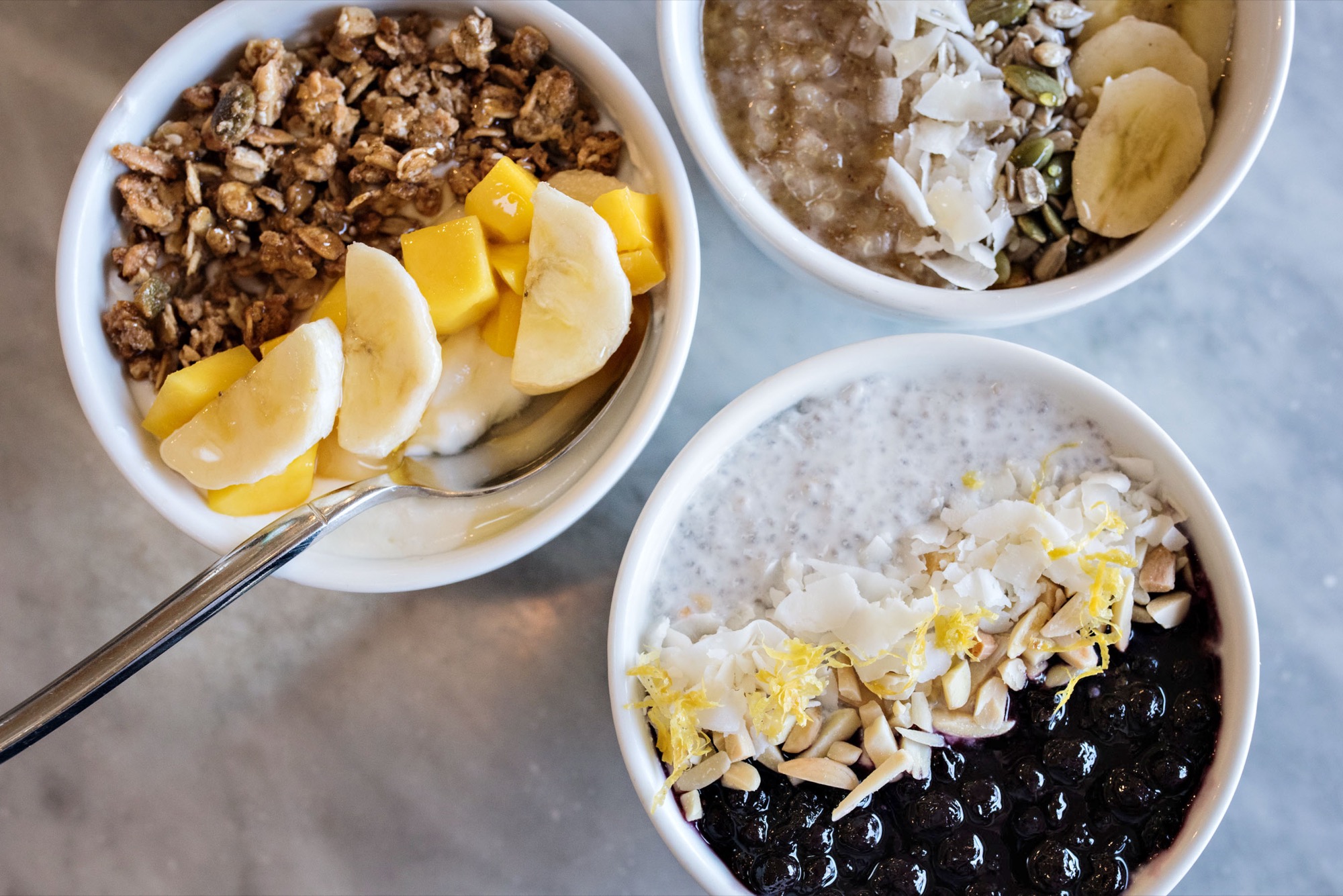
Upon returning from her culinary expedition, the outdoor enthusiast and passionate rock climber settled in Boulder, Colorado, where her incredible talent, serendipity, and (our) luck brought her into the Alpine Modern family.
We sat down with the worldly chef to talk about the much more elevated and seasonal menu she has created for the Alpine Modern Café in Boulder, Colorado.
Chef Ellory talks about Alpine Modern’s new Nordic-alpine menu
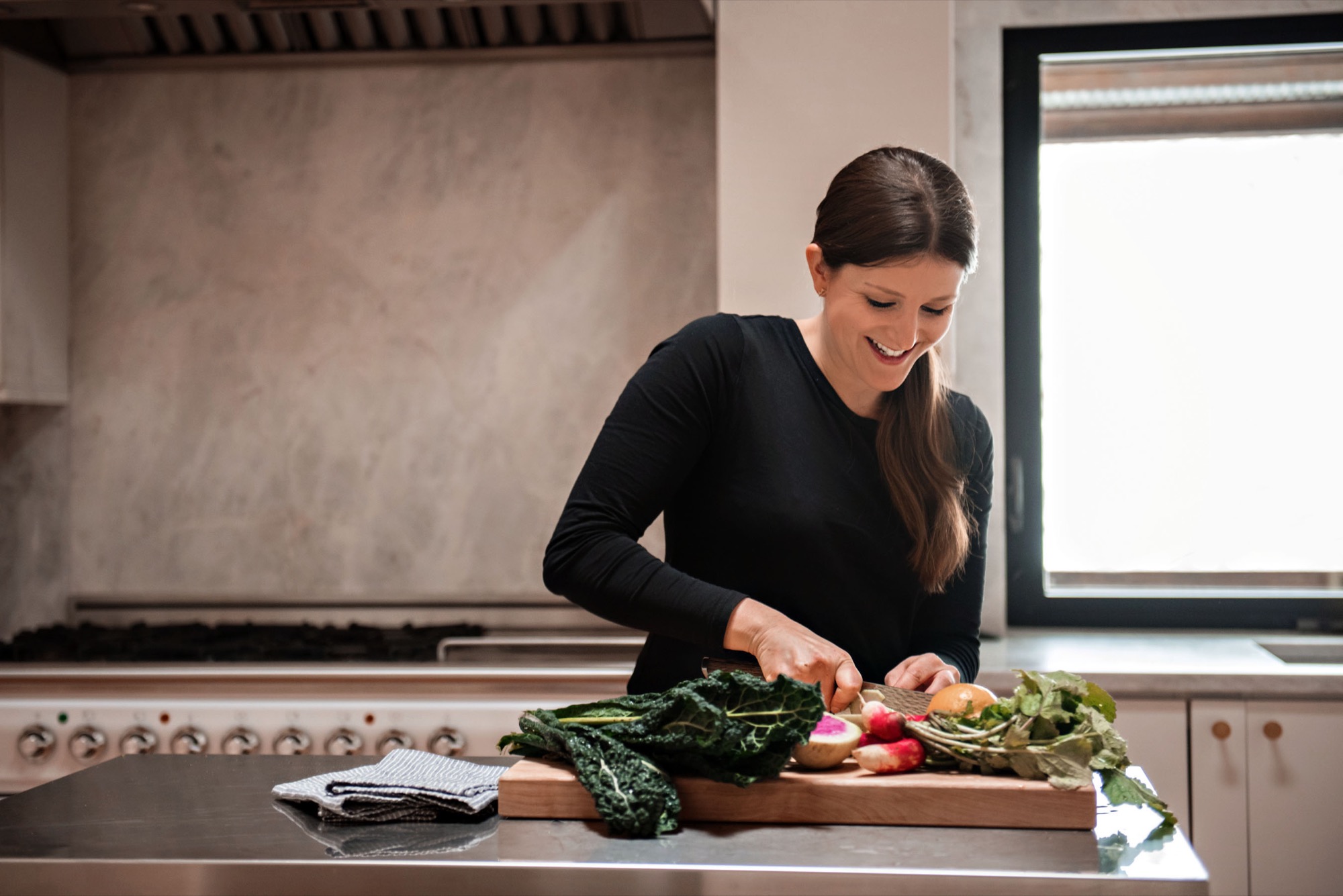
AM What’s essentially different about the new menu you have created for the Alpine Modern Café?
EA When I came to the Café, the food was very approachable but lacked a theme. I wanted to elevate the menu and make it seasonal. With a seasonal menu, you have fresher ingredients and can source them locally. As humans, we’re based on tradition and the themes of life and holidays. I feel that food and the ingredients are very much based on that, too.
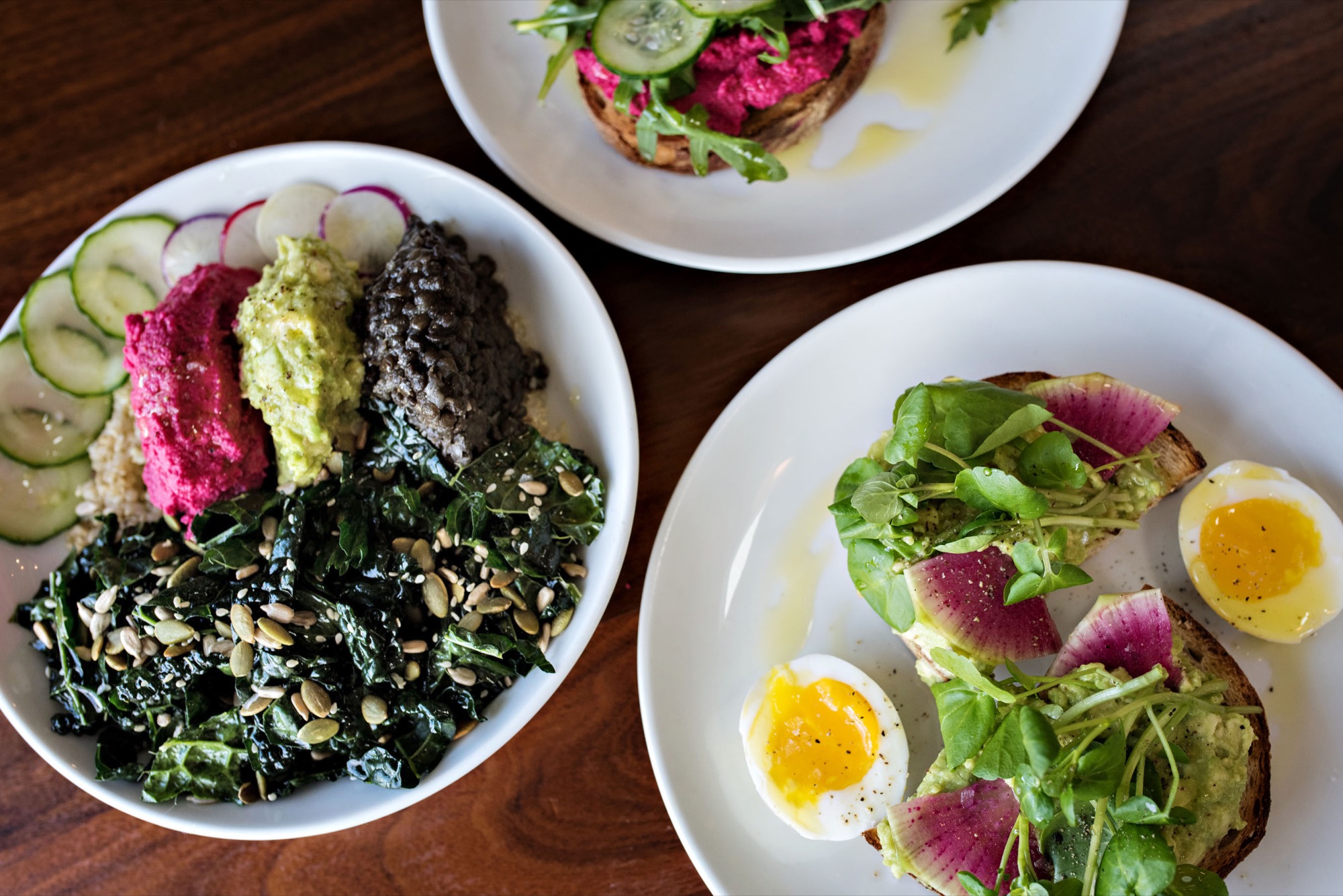
A Nordic-inspired menu
AM How did you come up with this new approach for the Alpine Modern menu?
EA I brainstormed what Alpine Modern was as a brand, what the food represents to us, and what we wanted to show the customers to be our foundation. Then I came up with the theme of Nordic-alpine food, which is scary for a lot of people. When you say Nordic food, you think of pickled herring or just really gross dishes like that. So I was very cautious of saying that to people. But I thought of what Nordic food is to me. I made a list of seasonal ingredients and started to build a menu off that. With food trends happening right now and the health consciousness—and I myself really care about nutrition—I wanted to implement that more into the menu as well.
AM Why Nordic? Boulder doesn’t necessarily represent a Nordic culture or environment...
EA Nordic represents simple living and food. I mean, look and their menus. It’s very healthy. It’s very clean. It’s not overthought. And I wanted to show that in the food. So I don’t necessarily want to say it’s Nordic-style food, but it has these same things behind it. It’s inspired by the foods of Iceland, Norway, Finland…
AM What are key ingredients you have implemented for the new menu?
EA I am using fennel, beets, dill, water crests—and instead of herring I’m using trout, and making it more approachable in that way. Instead of creams, I’m using thick, Nordic-style yogurts. And lemons, I’m using lots of vibrant zests in the food. And on top of that, I’m making it more seasonal.
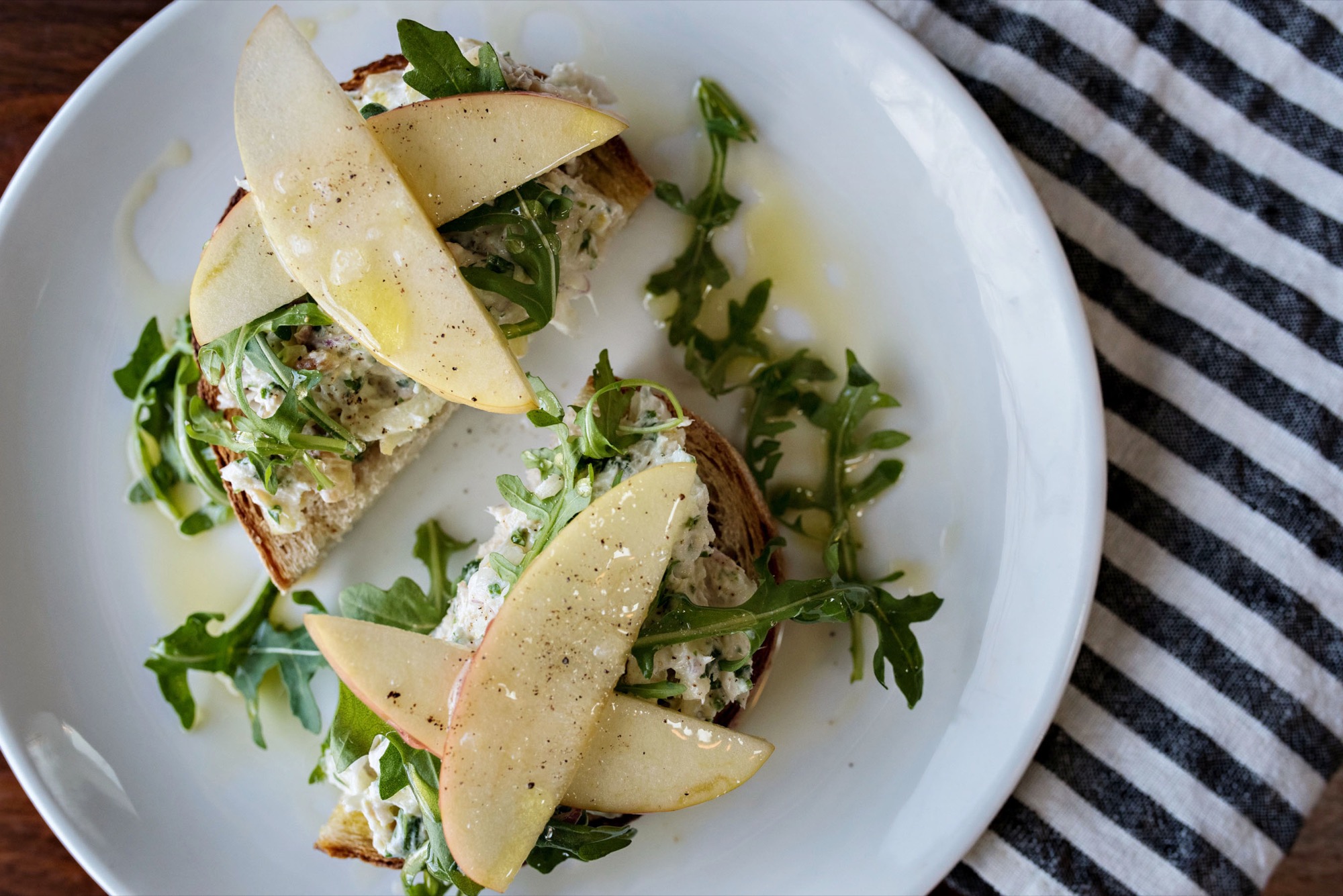
For example, our beet hummus on the winter menu will probably change to a carrot hummus in the spring. The menu will probably change four times a year.
With a healthy dose of Ellory...
AM The new menu is seasonal and Nordic-inspired. But what part of the new menu is quintessentially Ellory?
EA The twist of having what I would call nutritional, healthy hippie food intertwined into it. It goes with the Boulder theme. I worked in San Francisco before I came here, and I’ve been very health-oriented in the places I’ve worked. Greens are huge to me, so I’m trying to implement greens into almost every dish. And freshness and the vibrancy of colors. That’s very much me. The chia seed pudding, the quinoa porridge, the kale salad with avocado seeds... That’s very much me.
“Nordic represents simple living and food... I mean, look and their menus. It’s very healthy. It’s very clean. It’s not overthought. It’s inspired by the foods of Iceland, Norway, Finland…”
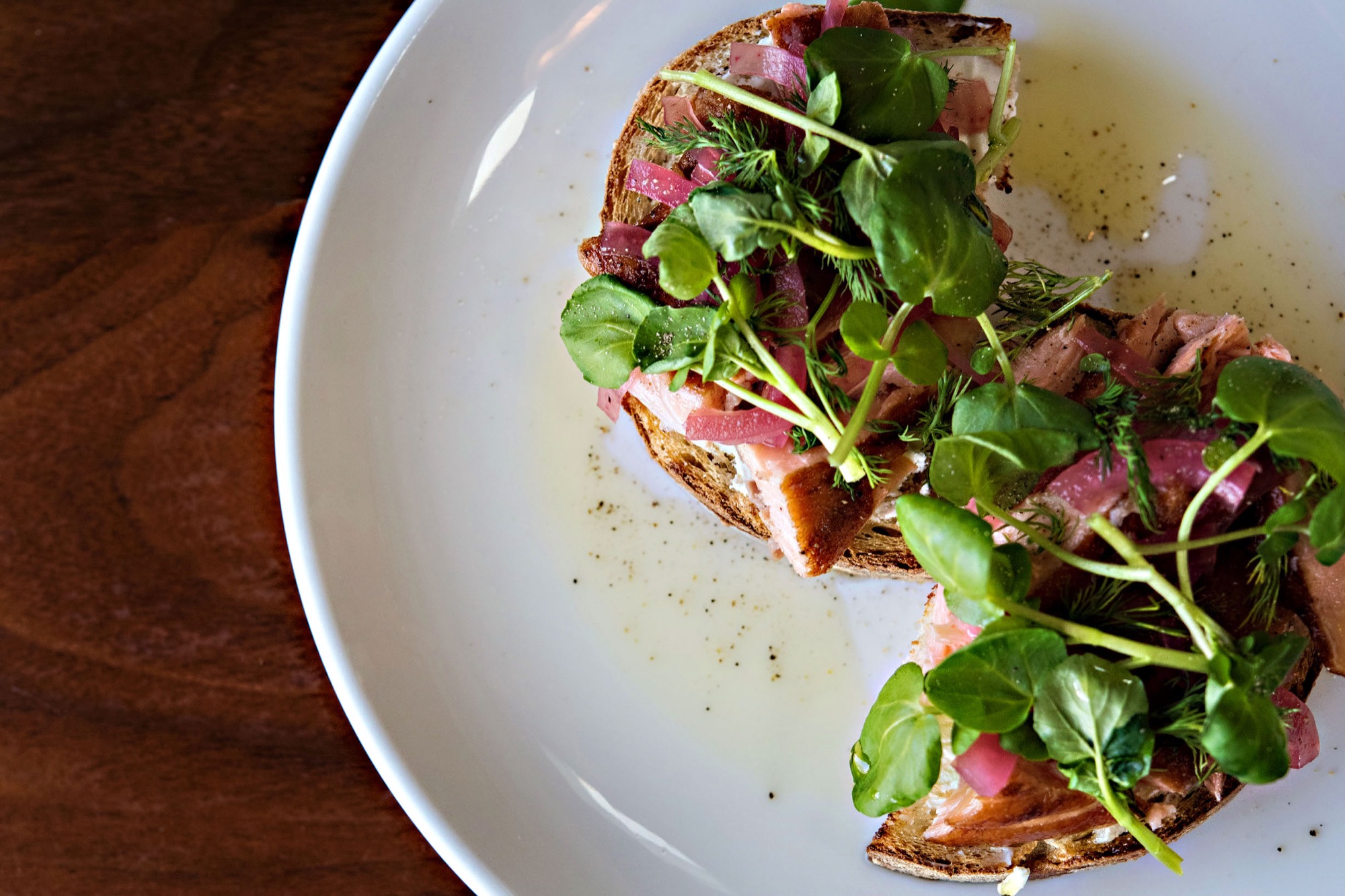
Behind the scenes
AM Now that we have an executive chef, a huge step up for Alpine Modern, and we have launched a new menu, what else has changed at the Café?
EA We’re focusing on making this not only an environment where people can come and get amazing food but also have amazing beverages that are special to the Café here. We’re creating monthly special beverages. Right now, for example, we have the Williamsburg and the matcha latte, and we’re going to have a Turmeric Latte soon.
AM Besides taking the menu to the next level, how does having you as an executive chef impact the Alpine Modern Café and the brand at large?
EA Having an executive chef here allows a lot more growth for Alpine Modern, for our food, and for the whole scene of the Café. It allows us to create a solid foundation and consistency and to implement new ways to eat and to be here at the Café. For example, we’re starting an event program, and we’re hoping to have live music in the summer and to do grill-out nights. There will be so much opportunity. And we are starting to implement grab-and-go food from the Café into our downtown location soon, at the Coffee Bar in our flagship retail store on Pearl Street here in Boulder.
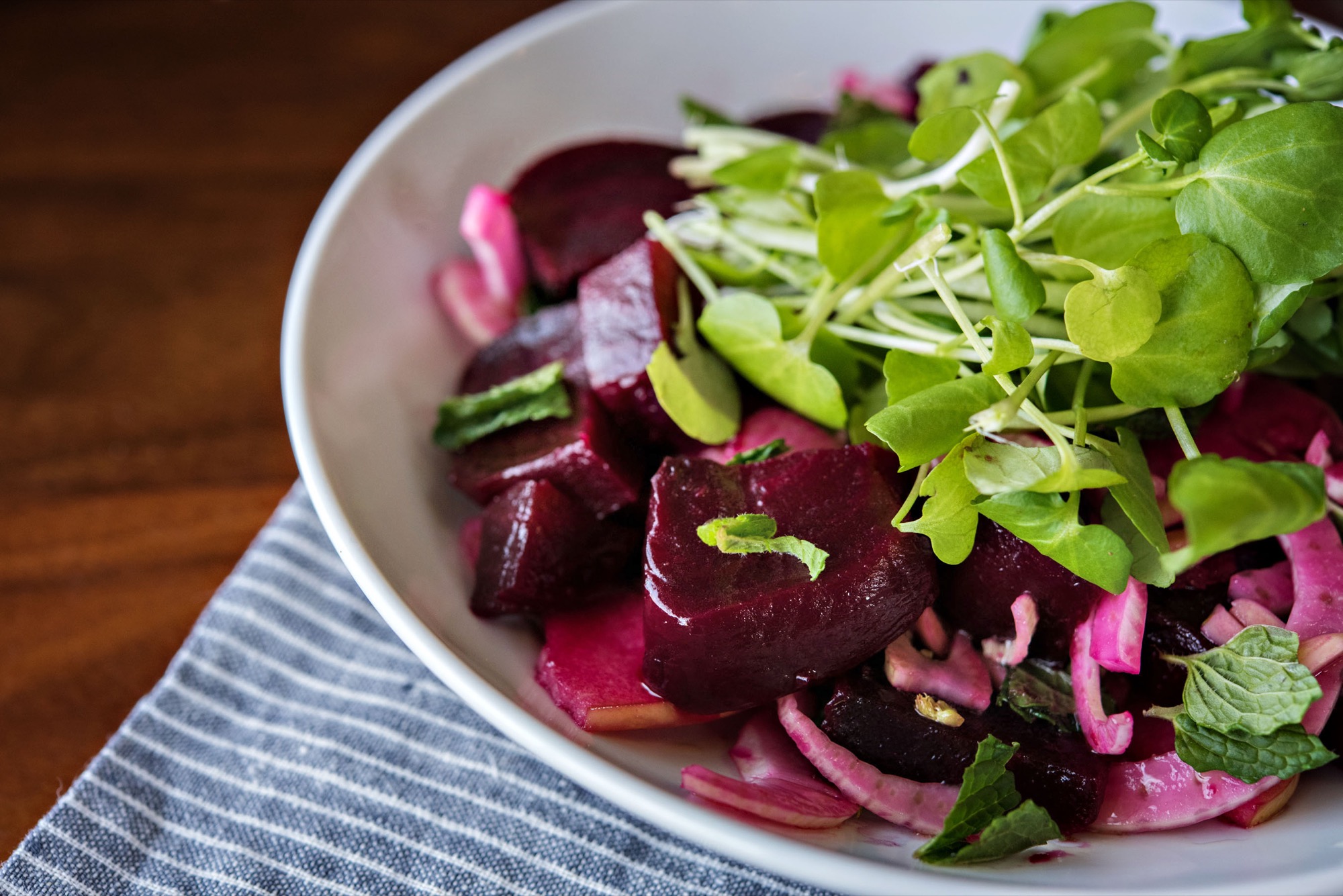
We’re also working on baking our own pastries fresh every morning. Another new thing is that we are offering gluten-free items. We’re working with Kim and Jake’s Bakery, a local gluten-free bakery. We’re using their bread and cookies, so almost everything on the new menu now has a gluten-free option.
“Almost everything on the new menu now has a gluten-free option.”
AM What is currently the most popular item on the new menu?
EA The Quinoa Lentil Bowl. It’s also one of my favorites for sure. And the Chia Seed Pudding—people are really digging that.
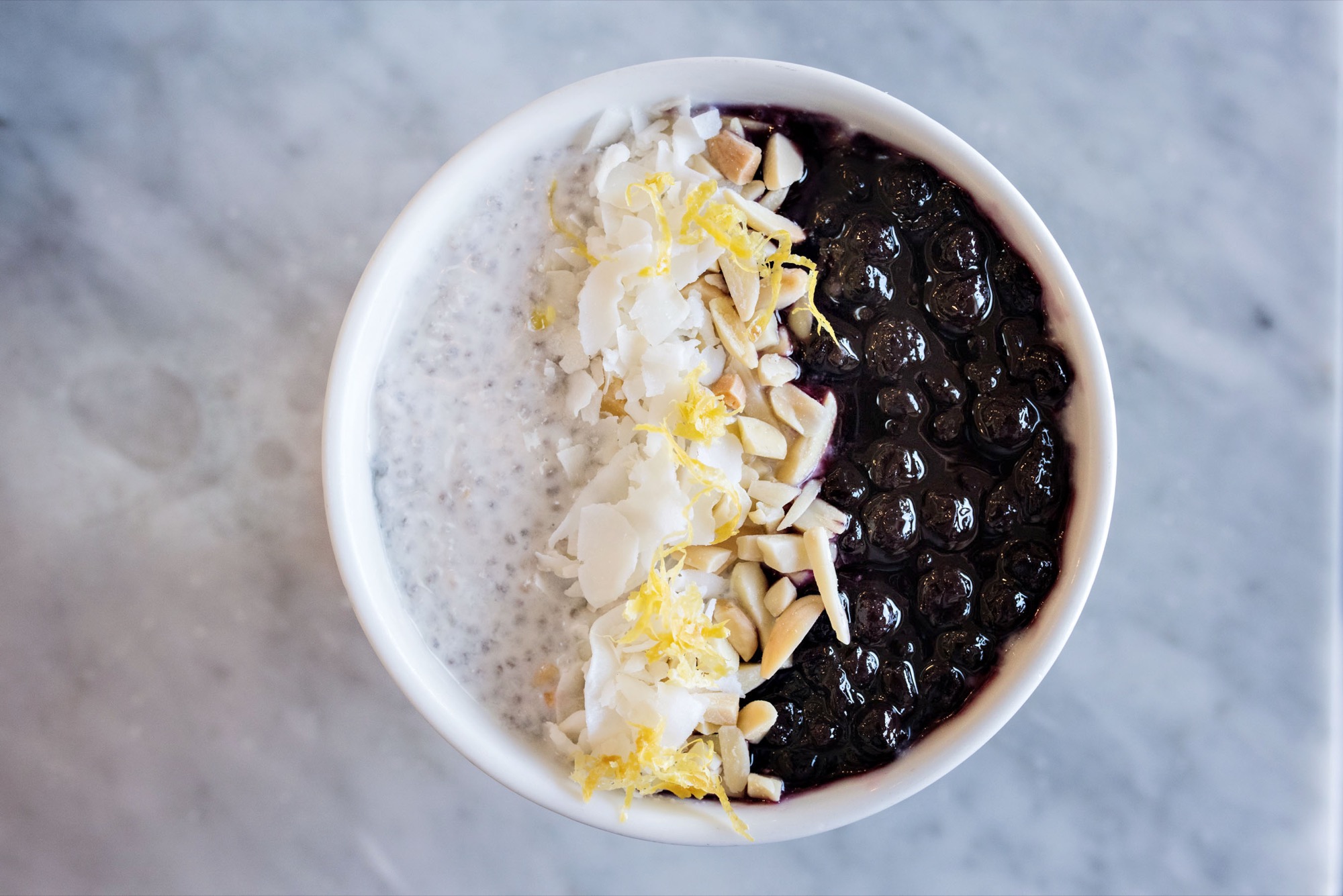
AM What feedback are you getting about the new menu?
EA The Café staff are loving it, and the customers are really enjoying it, saying things like, ‘Wow, you guys really elevated the menu.’ And that’s exactly what we wanted to do. The menu is not complex, it’s very simple, it’s all approachable because we have such a diverse community here in Boulder. We serve families and college students and young professionals—and we really wanted this to be something where you can walk in, and anyone can find something on the menu.
Come for the food and drinks, stay to feel good
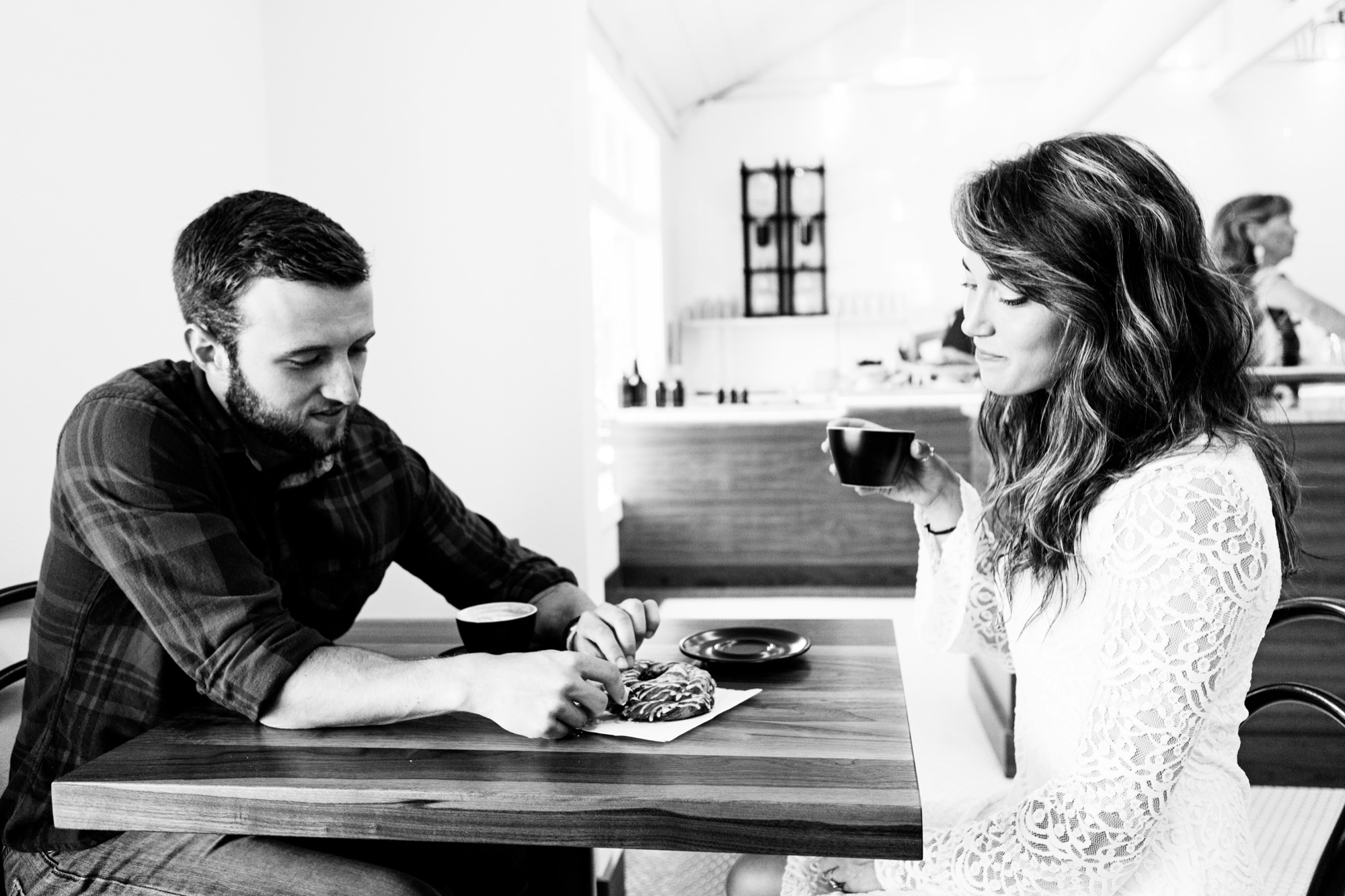
AM What are you hoping people come to the Café for?
EA I hope they come here to have their daily clean food, to eat food they really want and that they feel good for a while. And the same with their beverages—having amazing coffee that we really put a lot of time into finding and creating the best process with our ModBar. I hope our customers come in here and see that there is a lot of love and care put into everything—with our plating, with our presentation, and with our sourcing. △
“We really wanted this to be something where you can walk in, and anyone can find something on the menu.”
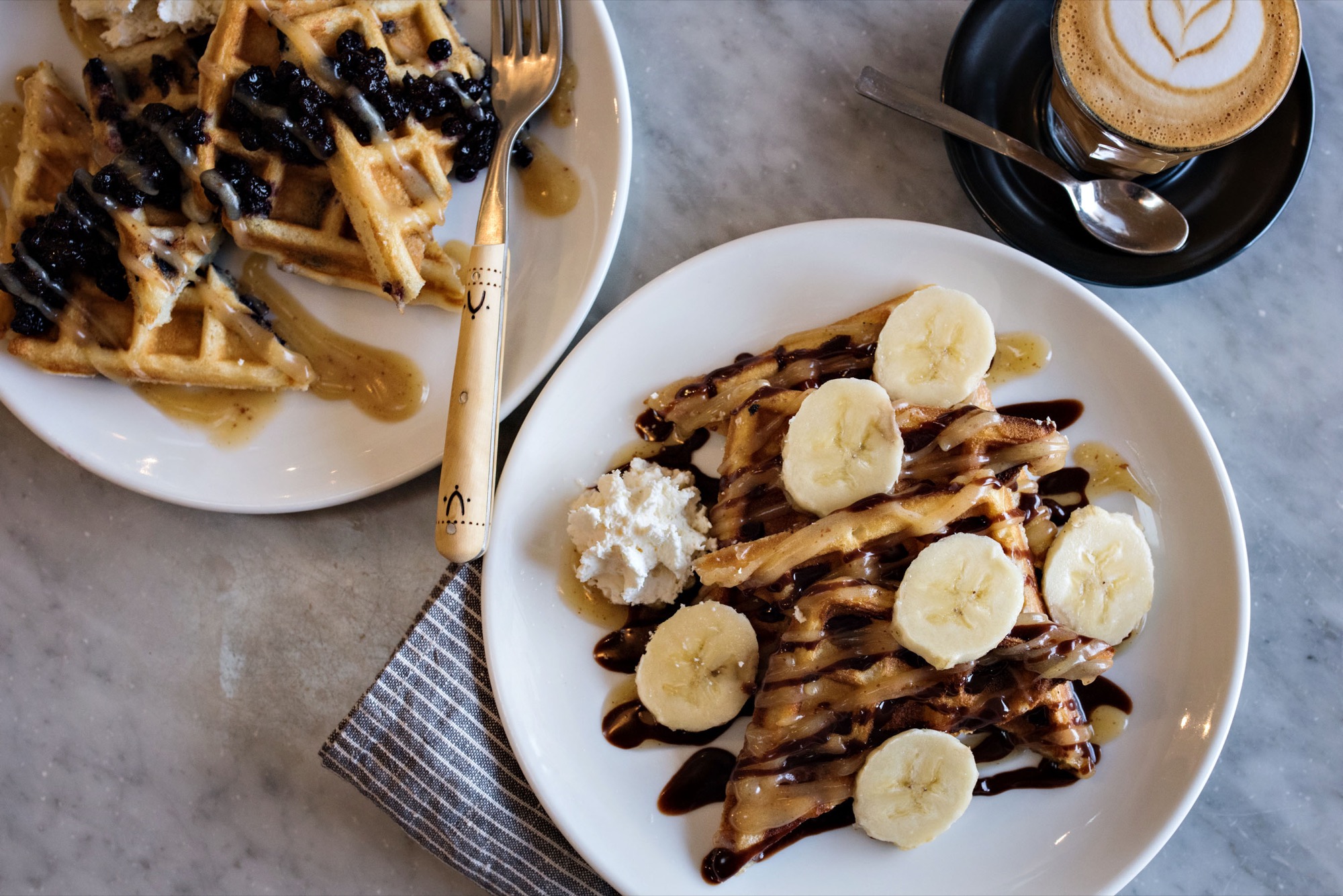
Introducing: Alpine Modern's Chef Ellory
After traveling the world for a year, our new executive chef brings Nordic-alpine flavors and tales from around the globe to the kitchen at Boulder’s Alpine Modern Café
Ellory Blair Abels jumped into the food industry at the age of fifteen, when she began working in restaurants. After studying her passion at The Culinary Institute of America (CIA) in New York City, she accepted her first position with a catering company in a holistic retreat center in Upstate New York. With expanding industry experience, however, came the feeling something was missing. So the Houston, Texas native, who grew up in Atlanta, Georgia, packed her bags and traveled to expand her horizon—and her palate. Through this journey, her philosophy about food, life, and the kind of person she aspired to be has evolved. Immersing herself in different ways of life and seeing different countries has opened her eyes to a whole new vision of food as a celebration of life and culture.
Upon returning, she started afresh in San Francisco, where she found her cooking match: Ellory joined the lovely Lisa Chatham in her personal cheffing business, which together they expanded into the catering company Green Heart Foods. Over the course of four years, the business grew from two people to fifty employees and a café. With two production kitchens and another in the making, helping to build Green Heart Foods was a life-changing experience for the young culinary talent.
Then, in 2015, Ellory made one of the hardest decisions she’s ever made—to leave behind what she knew in San Francisco and explore the unknown. Going after a lifelong dream, she once again packed her bags; this time not knowing when she would return. She bought a one-way ticket to Peru and traveled to eight different countries in one year.
Ellory has recently returned to the United States to begin her next adventure in Colorado, where she says she is “beyond excited to join the amazing family of Alpine Modern.” Now she can’t wait to share what she has learned and seen over the past year through her food at the Alpine Modern Café in Boulder.
A conversation with Alpine Modern Executive Chef Ellory Abels
AM Who are you, in a nutshell?
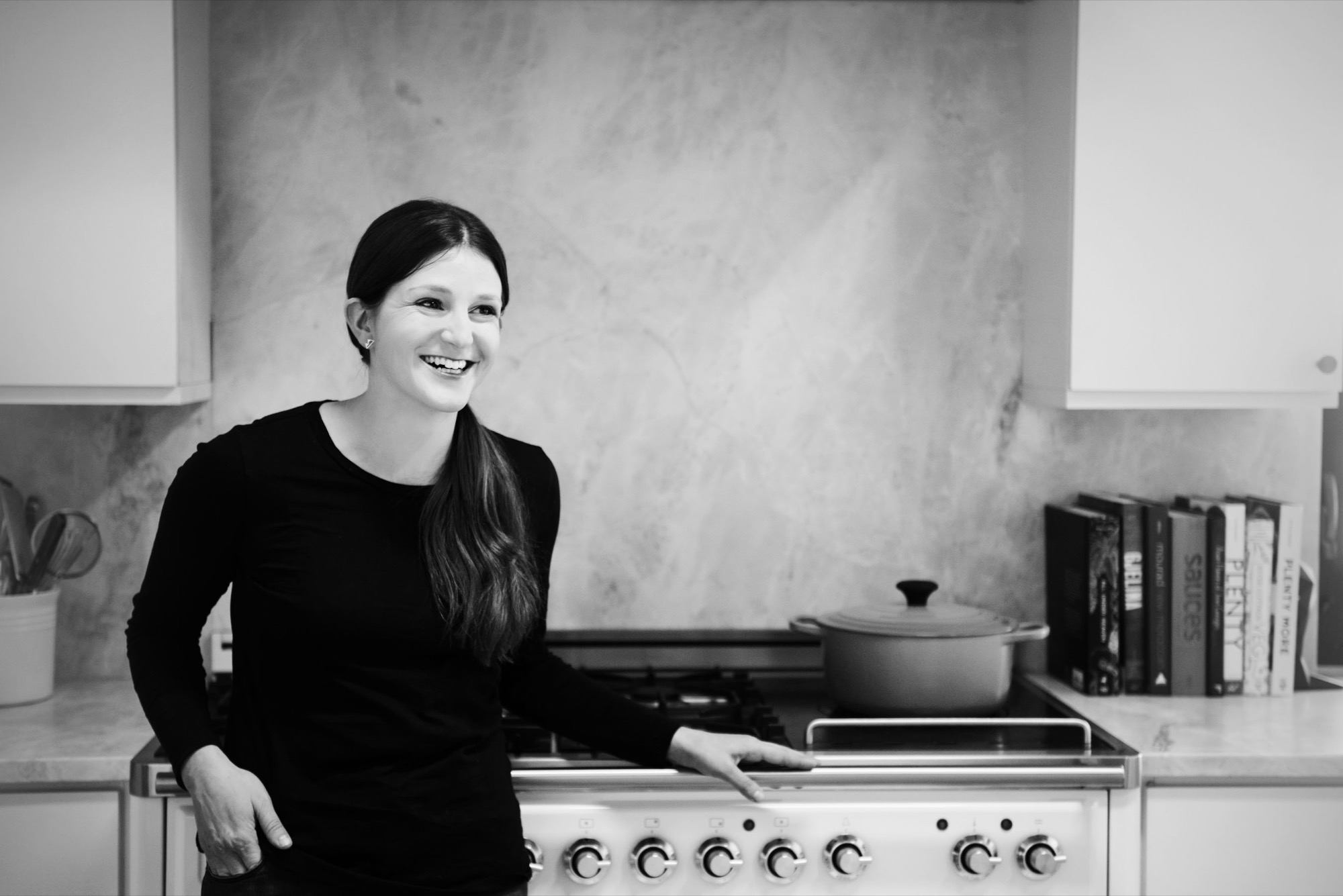
EA I am an opportunist. I’m always looking for ways to push the boundaries. I don’t like to live my life within the lines. I make my own rules and love to take risks. I am very curious and like to explore the questions of life. Besides that, I strive to live a simple life that’s not overly complicated. I take pride in surrounding myself with people I love and sharing memorable experiences with them.
AM Along your path, what experiences and encounters have made you who you are today?
EA Traveling! I have been lucky enough to have been able to travel pretty intensely from a very young age. Last year, I took a huge leap to leave the home I’ve made in San Francisco and explore the unknown. I decided to fulfill a lifelong dream of mine and travel longterm. I bought a one-way ticket to South America, with no plans other than to see all of the beauty the world has to offer. I explored eight different countries, two continents, and seven states in one year, collecting friends, stories, spices, and culinary techniques from every corner of the world.
It was the single most inspiring, eye-opening experience of my life and has shaped me as a person and as a chef. Traveling has definitely been my biggest teacher in life. The more I explore, the more my senses are awakened, and the more alive I feel.
“I explored eight different countries, two continents, and seven states in one year, collecting friends, stories, spices, and culinary techniques from every corner of the world.”
AM Share some of your childhood memories of food.
EA I grew up in a Jewish household where food was always the center of the event. My parents were amazing at exposing me to different ethnic foods from a very young age. Some of my favorite memories are cooking for the Jewish holidays and for Thanksgiving.
“I grew up in a Jewish household where food was always the center of the event.”
AM When and how did you know you wanted to become a chef?
From a young age, I was very determined to be an artist. I filled my spare time after school and my summers with a variety of art classes. My dream was to go to the Savannah College of Art and Design. Looking at the portfolio requirements to get in, however, I realized this was not what I wanted. I explored other ways to apply my creative ability. Food had always been a huge outlet for me. I grew up spending a lot of time cooking and experimenting in the kitchen with my dad. So I decided to put more effort into exploring the profession of food by working in different restaurants. After being involved in the food world for only a couple of months, it became very apparent that this was the path I wanted to take. Food is my own expression of art and is definitely my medium.
“Food is my own expression of art and is definitely my medium.”
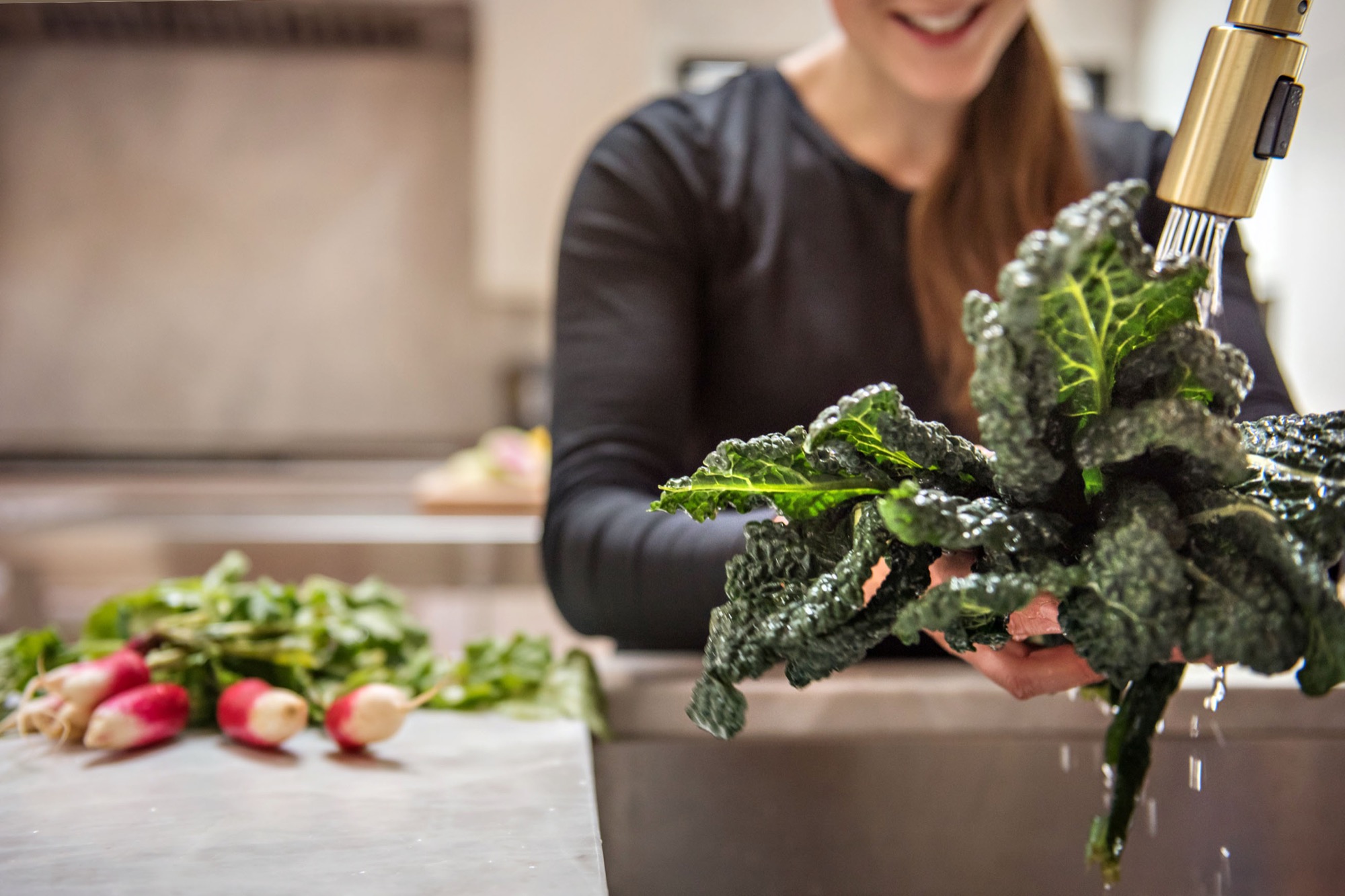
AM Who taught you how to cook?
EA My dad. He inspired me from a very young age to get into the kitchen. He also grew up working in a kitchen for the family diner in New Jersey, called “Abels Diner.” The dinner served a mix of comfort food and Jewish specialties. Listening to the many stories he has about growing up in the dinner has always inspired me and made me want to be involved in food. Fun fact… Frank Sinatra was a busboy for my grandfather’s diner. True story!
AM Who is your culinary icon? What do you admire about her or him?
EA Yotam Ottolenghi. I love his approach to food. His style and flavor profiles are very similar to what I love to cook. Israeli food is also one of my favorite cuisines to cook, and his cookbook Jerusalem is by far one of my favorites.
AM What’s your favorite food, and what do you love about it?
EA Hmm, that’s such a hard question. It really depends on the season and what trip I recently came back from that inspired me. I’ve been cooking a lot of curries from my most recent trip to India. It’s been fun to experiment with a lot of spices I brought back and to try to master the art of Indian cooking. Besides that, my go-to food to cook is probably Israeli food. I just love the mix of flavors and textures.
AM What culinary traditions are your methods and recipes rooted in?
EA Exploring food while traveling has shown me a variety of traditions, methods, and recipes that I bring into my own kitchen. I cherish these experiences and try to recreate them in my own version and share them with others along with the stories behind them.
“Exploring food while traveling has shown me a variety of traditions, methods, and recipes that I bring into my own kitchen.”
AM What’s your definition of good food?
EA Clean, simple, colorful, thoughtful, lots of love!
AM How do you translate Alpine Modern’s ethos of “quiet design” into your work at the Café in Boulder?
EA The food I create for Alpine Modern is clean and simple. It’s not overthought and shows off so much more by letting the ingredients speak for themself.
AM What’s your vision for Alpine Modern’s culinary future?
EA We have lots of exciting plans that are in the development phase. We’re trying to expand the experience Alpine Modern shares with it’s customers and bring the community together. One of the big changes is that we are now renting out the Café during after-hours for private events.
AM What’s your favorite place in the world, and why?
EA Tough question, but I’ll have to say, even with all of the amazing places I have visited around the world, nothing will ever beat Yosemite. No matter how many times I go there for an adventure, that place gives me goosebumps and brings the biggest beaming smile to my face. It’s just pure magic.
“Even with all of the amazing places I have visited around the world, nothing will ever beat Yosemite… It’s just pure magic.”
AM What makes you happy?
EA I’ve learned it’s the simple things in life that bring me the most joy. Being surrounded by my family and friends and living an active lifestyle that gets me outside everyday is my happy place in life.
AM What are you working on these days?
EA Lot’s of different things. I’m getting in training mode for climbing season to really try to get after it this year. I’m also in the process of developing new recipes, lots that are inspired by my recent travels. Besides that, I’m really putting a lot of focus on sticking around the states this year and spending lots of time with my family and friends and my pup, Chalten. △
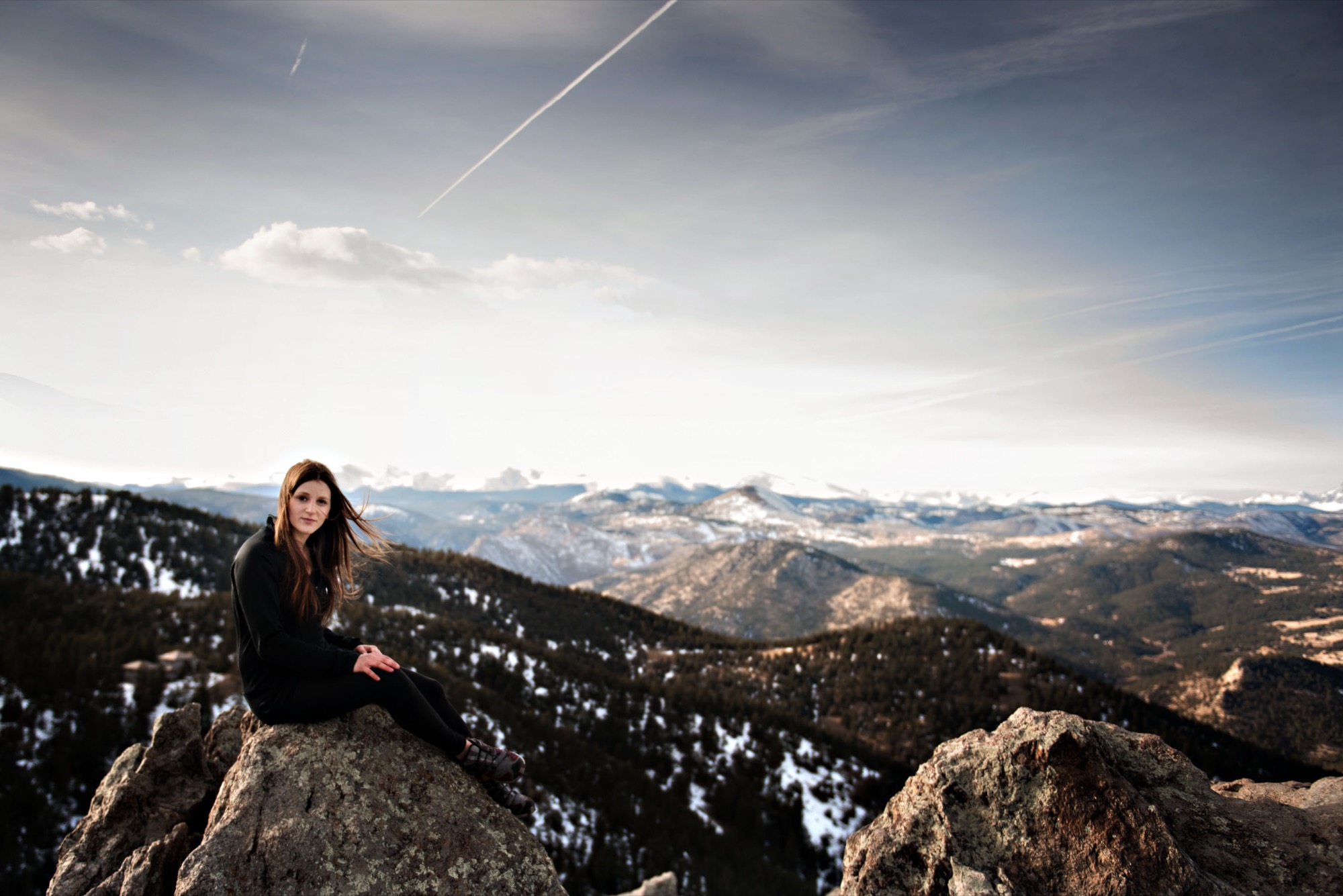
Recipe: Kale and Potato Pancakes with Gravlax and Nordic Yogurt
Alpine Modern Executive Chef Ellory Abels creates a delicious dish to make for your weekend brunch
Alpine Modern Executive Chef Ellory Abels created this dish for your New Year's brunch—or any Sunday morning of the new year. Yield: 2 portions/6 cakes Prep Time: 10 mins Cook Time: 10 mins

Ingredients
1 cup chopped kale ¼ cup minced red onion ½ cup shredded chef potatoes 2 whisked eggs ½ tsp dill 2 tbsp brown rice flour ½ tsp lemon zest ¼ cup of preferred frying oil 6oz Gravlax ¼ cup nordic yogurt 1 lemon sliced salt and pepper to season
Tools
Medium Bowl Non-Stick Pan Spatula Whisk Zester Knife Cutting Board

Method
Combine chopped kale, red onion, potatoes, eggs, dill, flour, and lemon zest in bowl.
Mix together and season to your liking.
Use non-stick pan with frying oil and heat up on medium heat. Once oil is smoking put make medium size cake and cook till crisp on each side.
Finish with a dollop of nordic yogurt on each cake with gravlax and a squeeze of some fresh lemon juice and enjoy! △

Recipe: Tomato-Braised Leg of Lamb
The headliner of Alpine Modern's Winter Feast
INGREDIENTS
boneless leg of lamb: 3 2.5 lb legs, trussed with twine salt pepper
TOMATO BRAISING LIQUID
garlic: 2 bulbs, minced carrots: 6 yellow onions: 3 leeks: 3 medium-sized fennel: 2 bulbs, shaved salt red wine: 1 bottle San Marzano tomatoes: 3 cans fennel seed: 3 T, ground chili flakes chives Parmesan cheese

DIRECTIONS
Leg of lamb
Season generously with salt and pepper. Heat a grill or cast-iron pan. Sear the lamb legs on both sides on high heat until nicely seared, 8–10 minutes total. Reserve to later place in the tomato liquid.
Tomato braising liquid
Preheat oven to 300° F (150° C). In a large pot or rondeau heat a small amount of grape seed oil. Once hot, add the garlic and sauté until translucent. Add the small diced carrots, onions, leeks, and fennel. Season the vegetables with salt and let them sauté until nearly tender. If the pan begins to brown, this is a good thing.
Once the vegetables are ready, deglaze the pan with the bottle of red wine. Let the alcohol cook out of the wine (about 5 minutes). Add the tomatoes, fennel seed, and chili flakes. Add the seared lamb legs to the tomato sauce. The lamb should be submerged in the liquid. Put the lid on the pot and braise in the oven until lamb is tender, about 6 1/2 hours, checking every 2 hours.
Remove the braising pot from the oven and allow the lamb to cool completely in the sauce. Gently reheat and serve, adding cut chives and Parmesan on top. Serves 10. △
This recipe is part of Alpine Modern's big Winter Feast, which we will publish here this week.
Recipe: Braised Leeks with Black Truffle
An elegantly simple vegetable side for any festive dinner
INGREDIENTS
leeks: 12 small, cleaned and trimmed black truffle butter: 8–10 oz (227 to 283 g) *or regular butter with high-fat content salt pepper red radish: 1
DIRECTIONS
Bring a large pot of salted water to a boil. Also, prepare an ice bath. Remove the root end of the leek and trim the green leaves so roughly 6 inches (15 cm) of the leek is available. Then, cut in half lengthwise. Set aside. Place the leeks into the blanching water for approximately 6 minutes or until nearly tender. Remove from pot and place in the ice bath until cool to stop the cooking process.
In a large sauté pan on medium, heat a small amount of grape seed oil and gently arrange the cooked leeks so they fit in one layer. Once the leeks are hot and begin to sear slightly, place a piece of circular parchment paper on top of the leeks to help them cook evenly (see photo). Add the black truffle butter. Once the butter is melted, season with salt and pepper and serve, on the table, out of the sauté pan. Shave the red radish on a microplane and top the cooked leeks with it for added texture. Serves 10. △
This recipe is part of Alpine Modern's big Winter Feast, which we will publish here this week.
Recipe: Germknödel with Plum Filling
An Austrian ski hut favorite by Austrian top chef Martin Reiter of Hotel Kitzhof in Kitzbühl, Tyrol
Germknödel are a classic lunch favorite at ski huts in the Austrian alps. The fluffy, steamed yeast dumplings are so filling, this comfort food can be a main dish all on their own. The traditional filling is Powidl (a thick spiced plum mousse), which can easily be substituted with plum jam. Germknödel are topped with melted butter and a generous heaping of a mixture of ground poppy seeds and powdered sugar. Recipe by Austrian top chef Martin Reiter, Hotel Kitzhof, Kitzbühl,Tyrol
INGREDIENTS
Makes 6 Germknödel
250 gr flour, divide 15 gr fresh yeast 25 gr butter, softened 1/8 liter warm milk 25 gr powdered sugar 2 egg yolks 1 tsp vanilla sugar (if you can’t get the little sachets, substitute with 1 tsp sugar mixed with 1/4 tsp vanilla extract) lemon zest a dash of salt 6 tbsp plum jam for filling
Topping
90 gr melted butter 90 gr ground poppy 50 gr powdered sugar
STEPS
Dissolve yeast in warm milk, stir in 50 gr of the flour, then sprinkle some flour on top, cover, and let rest in a warm place. This is called the Dampfl.
Heat water in double boiler pot set.
Add softened butter, powdered sugar, vanilla sugar, egg yolk, lemon zest, and salt into double boiler and beat until foamy and warm.
Knead Dampfl with the remaining flour and butter mixture into a smooth dough.
Divide dough into 6 parts, form balls, cover with cloth, and let rest for 30 minutes.
Once the dough has risen, flatten each ball and set 1 tbsp plum jam in the middle. Fold edges up and pinch together so dough closes around the plum filling. Set on floured surface with pinched closure facing down, cover with cloth, and let rest once more until dumplings have risen by half of their volume.
Meanwhile, bring water to a simmer in large pot.
Carefully drop dumplings in the water and simmer for 15 minutes with the pot lid half on, flipping the dumplings over half way through.
Meanwhile, mix ground poppy seeds and powdered sugar for topping.
Place each hot dumpling on a plate and top with melted butter and poppy seed/powdered sugar mixture (the locals heap it on).
For a less traditional yet heavenly delicious variation, top Germknödel with warm vanilla sauce instead of the melted butter, sprinkle with poppy seeds and sugar.
An Guadn!
Recipe: Muscovy Duck Breast with Chanterelles, Pickled Radish, and Foie Gras Gastrique
A fine duck dish starring mushrooms and pickled garden gems preserved from summer
INGREDIENTS muscovy duck breasts: 2 breasts salt pepper grapeseed oil chanterelles: 113 g (4 oz) shallot: 1, diced butter: 28 g (2 T) thyme: 3 sprigs
GASTRIQUE
reserved apple liquid: 236 ml (1 cup) from Whiskey Preserved Apples recipe shallot: ½, diced bay leaf black peppercorns apple cider vinegar: 118 ml ( cup) rendered foie gras fat: 30 ml (2 T)
Duck Breast
Preheat oven to 180° C (350° F). Carefully score the skin with a sharp knife. Season tempered duck breast generously with salt and pepper. On medium-high heat, heat grapeseed oil until the oil is hot. Sear, skin-side down, until skin is nicely golden brown. Place pan (with the duck in it) in the oven until the duck breast reaches 54.4° C (130° F). Remove duck from the pan, let it temper for a few minutes before slicing. Finish sliced breast with sea salt and set aside.

Chanterelles
Carefully clean the mushrooms to remove excess dirt. Once clean, heat a pan, add a small amount of grapeseed oil, and add diced shallot. Once the shallot is translucent, add the mushrooms, season with salt and pepper, and cook for 3–5 minutes. Add a knob of butter and a few sprigs of thyme. Once butter is melted and mushrooms are coated, remove from pan and set aside.
Gastrique
Remove half of the liquid from the cooked apples (see recipe). Place in a saute pan with diced shallot, bay leaf, and black peppercorns. Reduce liquid by half, add apple cider vinegar. Reduce the liquid another quarter (total time 8‒10 minutes). Strain and return to cleaned sauté pan. Add a tablespoon of rendered foie gras fat for flavor. Season with salt and pepper. Stir and set aside.

Pickled Radish
See recipe for Red Wine Pickling Liquid. Set aside 3‒5 wedges.
To serve
Place the sliced duck, chanterelles, and pickled vegetables on a plate and pour the gastrique on top. Serves two.
Other garnishes include
Pickled gooseberry, green strawberries, pickled cherries. It’s easy to substitute any of these as need be. △

This recipe accompanies "Preserving Traditions."
Recipe: The Alpinist's Larder
A preserved whiskey drink spiked with the taste of the summer passed
INGREDIENTS
pickled cherries: 3 pieces preserved whiskey: 60 ml (2 oz) leopold bros. three pins herbal liquor: 20 ml (0.7 oz) lemon juice: 20 ml (0.7 oz) honey syrup: 20 ml (0.7 oz)
DIRECTIONS
1 Combine all ingredients into a shaker 2 Gently muddle the cherries 3 Shake with ice 4 Double strain over ice 5 Garnish with cherries, mint, and lemon peel.

Recipe: Alpine Hot Toddy
Enjoy a warming drink in memory of the summer harvest
INGREDIENTS herb bundle: Thyme, marjoram, sage, lemon peel, mint, sorrel whiskey preserved apples: 30 g (1 oz), diced violet flowers preserved whiskey: 60 ml (2 oz) leopold bros. three pins herbal liquor: 20 ml (0.7 oz) lemon juice: 20 ml (0.7 oz) hot water: 1 pitcher
DIRECTIONS
1 Place all ingredients into a heat-resistant pitcher 2 Add hot water to steep (1‒2 minutes) 3 Strain into a heated mug or glass 4 Garnish with apples and lemon peel.
 Photo by Ashton Ray Hansen
Photo by Ashton Ray Hansen
 Boulder bartender Jon Watsky making the Alpine Hot Toddy / Photo by Ashton Ray Hansen
Boulder bartender Jon Watsky making the Alpine Hot Toddy / Photo by Ashton Ray Hansen

This recipe accompanies "Preserving Traditions."
Recipe: Whiskey Preserved Apples
Bag summer for a little while longer. Winter is coming.
INGREDIENTS Honeycrisp or Gala Apples: 2 peeled, quartered, and cored Rye or Bourbon whiskey: 300 ml (10 oz) Honey syrup: 60 ml (2 oz)—1:1 ratio honey:water Thyme: 1 sprig Sage: 1 sprig Lemon Peel: 2 peels Orange Peel: 2 peels Fennel Seed: 3 g (⅔ tsp, 0.1 oz) Clove: 3 g (⅔ tsp, 0.1 oz) Cinnamon Stick: 1 small
DIRECTIONS
1 Blanch (for 2–3 minutes) and shock the apple quarters. 2 Place all contents into a cryovac bag and seal. 3 Using an immersion circulator, poach the contents for 3 hours at 48° C (118° F). 4 Save liquid for the Alpine Hot Toddy recipe.
This recipe accompanies "Preserving Traditions."
Preserving Traditions
Savor harvest flavors well into winter by preserving the simple traditions and the sweetest fruits of alpine summer.
Preserving fresh foods so they will provide lasting sustenance through the cold season has been the stuff of daily life since the beginnings of human civilization—nowhere more so than in the mountains and other places where winter lingers.

Cured, dried, smoked, and salted meats and fish. Buttermilk, kefir, and cheese from fresh milk. Wine, spirits, beer, and cider. Pickles, krauts, jams. Tea, coffee, and kombucha. Many of our favorite foods and drinks are created through preservation and fermentation.
Cultured heritage
Passed down through generations, these basic methods served as important tools for surviving lean times. They also served, and can still serve, as familiar rituals that weave and strengthen family and community ties—and enliven our palates, hearths, and communal tables.
Your grandmother may have canned, but with the industrialization of food in the past half-century, many of us have lost touch with this inherited knowledge. Today, people around the world are paying more attention to what they eat and where it came from, tuning in to seasonal foods grown where they live, and reclaiming the simple labors and rewards of growing, preparing, and preserving some of their own food.
Sour beers, probiotic-rich fermented foods, and artisan pickles and preserves are now mainstays at craft breweries, farm-to-table eateries, even grocery stores. In many ways, it’s the rebirth of a more handcrafted, gastronomically rich world, one you can share with your family and generations to come.
"In many ways, it’s the rebirth of a more handcrafted, gastronomically rich world, one you can share with your family and generations to come."
Craft, quality, and connection
Everyone is evidently busier than ever these days. So why this nostalgic look backward at earlier ways of life and at “slow-food” traditions? Amidst the rush, we intuit the importance of slowing down every once in a while to can, pickle, or bake a pie... or to savor a nice bottle of wine or a great cup of coffee. It’s the only way we actually live in the moment. Instant gratification is rarely authentic and ultimately without value.

Preserving basic foods is often done when there’s a surplus of a food: peak season or a bumper harvest. Gathering in a kitchen with a group of people committed to one project, like jarring ramps or canning tomatoes, is a good source of inspiration. Making your own food and creating foods you can’t easily find elsewhere creates a potent connection. People will always gravitate toward craft and quality.
"Making your own food and creating foods you can’t easily find elsewhere creates a potent connection."

Flavor alchemy
Preserved foods are transformed through alchemical processes that yield bright, distilled flavors that shift, soften, and deepen over time. They are living, breathing things. You never know exactly what you’ll get when you open the jar or the bottle.
"[Preserved foods] are living, breathing things. You never know exactly what you’ll get when you open the jar or the bottle."
Food pros like Boulder-based Chef Colin Kirby (El Bulli, Spain, 2008) know a secret: Preserving makes foods more interesting. Done right, simple methods add new life to the most basic ingredients. For instance, savory fruits pickled with varied vinegars make inspiring elements of a complex dish. The key? They create a balance between fat and acidity, a too-often-forgotten flavor component.
Here, the minimalist chef introduces a few techniques:

White Balsamic Pickling Liquid
INGREDIENTS white balsamic vinegar: 2 parts sugar: 1 part salt: 1 part
DIRECTIONS Heat all ingredients to 82° C (180° F) or higher to dissolve sugar. Let cool and set aside
Red Wine Pickling Liquid
(for Cherries and Radishes)
INGREDIENTS red wine vinegar: 1152 g (38 oz) water: 535 g (19 oz) sugar: 254 g (9 oz) peppercorn bay leaf
DIRECTIONS Heat all ingredients to 82° C (180° F) or higher to dissolve sugar. Let cool and set aside
Apple Cider Pickling Liquid
INGREDIENTS apple cider vinegar: 2 parts sugar: 1 part salt: 1 part
DIRECTIONS Heat all ingredients to 82° C (180° F) or higher to dissolve sugar. Let cool and set aside
Rice Wine Brine
(for Green Strawberries and Gooseberries)
INGREDIENTS rice wine vinegar: 340 g (12 oz) sugar: 340 g (12 oz) water: 200 g (7 oz) lime juice: 90 g (3 oz) bay leaf mustard seed peppercorn
DIRECTIONS Heat all ingredients to 82° C (180° F) or higher until sugar is dissolved. Let cool and set aside.
A note on processing, storage, and safety
The vinegar and spices in these recipes make all the difference. They give fruit and vegetables new life and provide inspiration to any chef. Pickling unique ingredients such as green strawberries and gooseberries gives great acidity and texture to classic dishes like duck and chanterelles.
The vinegar also allows for processing (boiling and sealing the jars to prevent spoilage) to occur, and it ensures the pH is below 4.6. This is very important. When any of these recipes are used for long-term storage, please follow basic canning rules: Sterilize jars and lids, test the pH (general rule is below 4.6), and carefully boil the jars before setting aside. Once these rules are followed, start canning. △
Recipe: Muscovy Duck Breast with Chanterelles, Pickled Radish, and Foie Gras Gastrique
A fine duck dish starring mushrooms and pickled garden gems preserved from summer. Go to recipe »
Recipe: Whiskey Preserved Apples
Bag summer a little while longer. Go to recipe »
Recipe: Alpine Hot Toddy
Enjoy a warming drink in memory of the summer harvest. Go to recipe »
Recipe: The Alpinist's Larder
A preserved whiskey drink spiked with the taste of the summer passed. Go to recipe »
Recipe: The Perfect Egg Sandwich
A simple dish to remind you to try new new things in life
You need a small cast-iron pan...
Ingredients
- Artisan bread
- Butter
- Farm-fresh egg
- Salt/pepper
- Japanese mayonnaise (Kewpie)
- A handful of arugula (basil is nice too)
- Tomato, sliced
- Bacon, cooked
Preparation
Heat up the cast-iron pan on medium heat while toasting two slices of bread.
Melt butter in the pan and, once hot, add cracked egg. Sprinkle salt and pepper on the egg and let it cook for three to five minutes, depending on how well-done you like your egg.
In the meantime, spread mayonnaise on each slice of toasted bread. Add a handful of arugula to the bottom slice, place egg on top, add tomato and bacon and cover with the other slice.
Eat and resist the temptation to make another one.
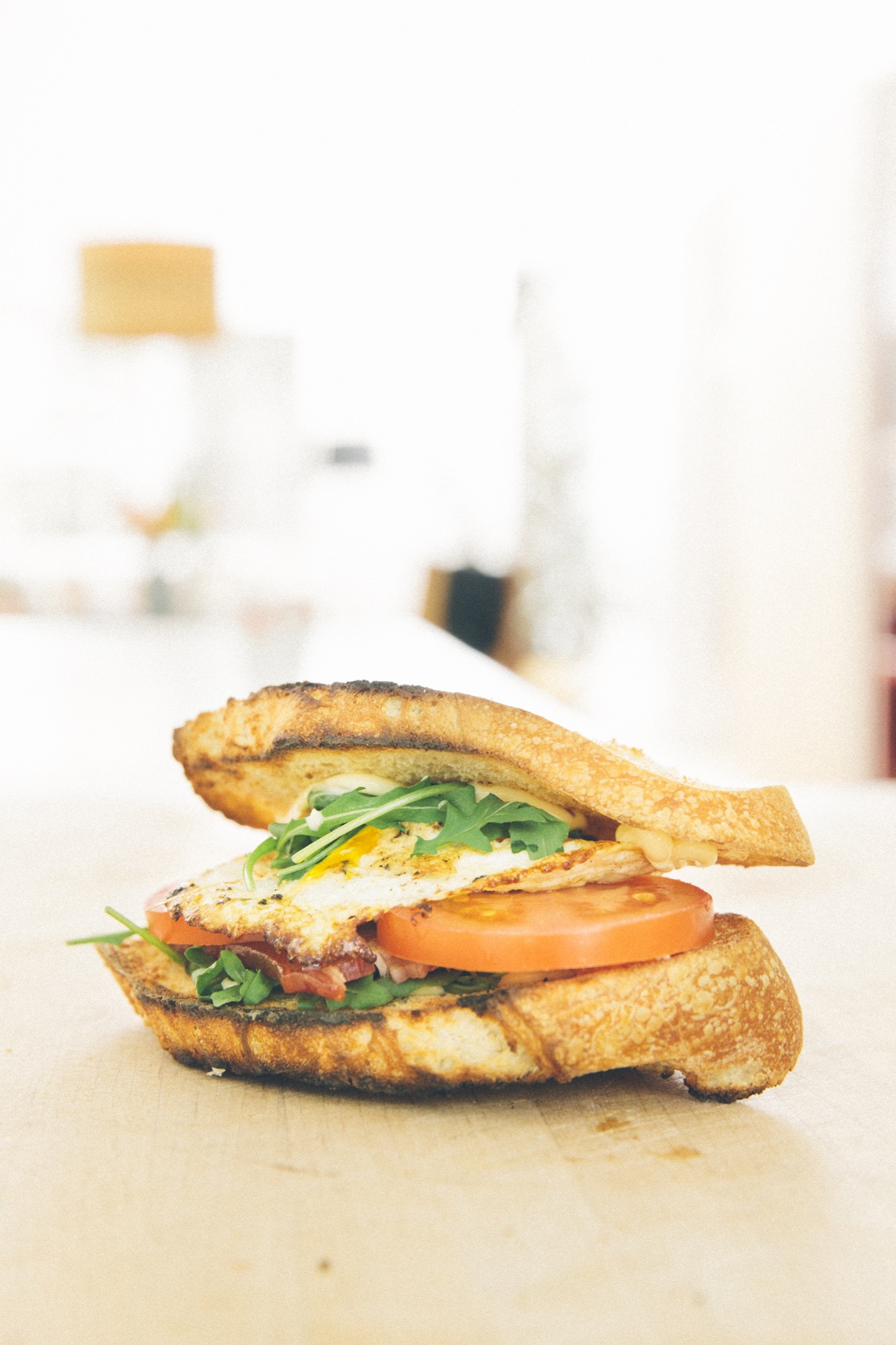
Read the story of a Boulder ad and marketing exec whose Griswold #2, a gift he'd only come to appreciate years later, reminds him to try new things in life.
It'll Pan Out
His Griswold #2 reminds a Boulder ad exec to try new things in life
To eat an egg, you must break the shell. How my cast-iron pan became a symbolic reminder to take risks and try new things. The reward is tremendous and defining. I remember the first time I went fly fishing. It was a disaster. But I loved it. Being on the water hunting fish is a grand way to spend the day. It took me three seasons to get to the point where I can consistently catch fish. It’s a process. You need to find where the fish are. Determine what they eat. Place the fly so perfectly the fish think it’s real. Pray the fish strikes. Set the hook. Fight the fish. Land it. Your reward? You get to hold in your hands a magnificent creature . . . only to release it, so you can catch again another day. The process never gets old. The reward is extraordinary.
I’m fortunate that I was open to learning something new and had a good friend willing to teach me. In hindsight, he gave me an incredible gift neither of us recognized at the time. Sharing and being open to trying new things takes courage on both sides. It’s worth it, though. You learn who you are, what makes you happy, what drives you, and what you want to do with your life. I call it perspective. Others call it wisdom. Whatever it may be, I just wish it hadn’t taken me so long to realize, because there were many things along the way I didn’t try.
“Sharing and being open to trying new things takes courage on both sides, but it’s worth it.”
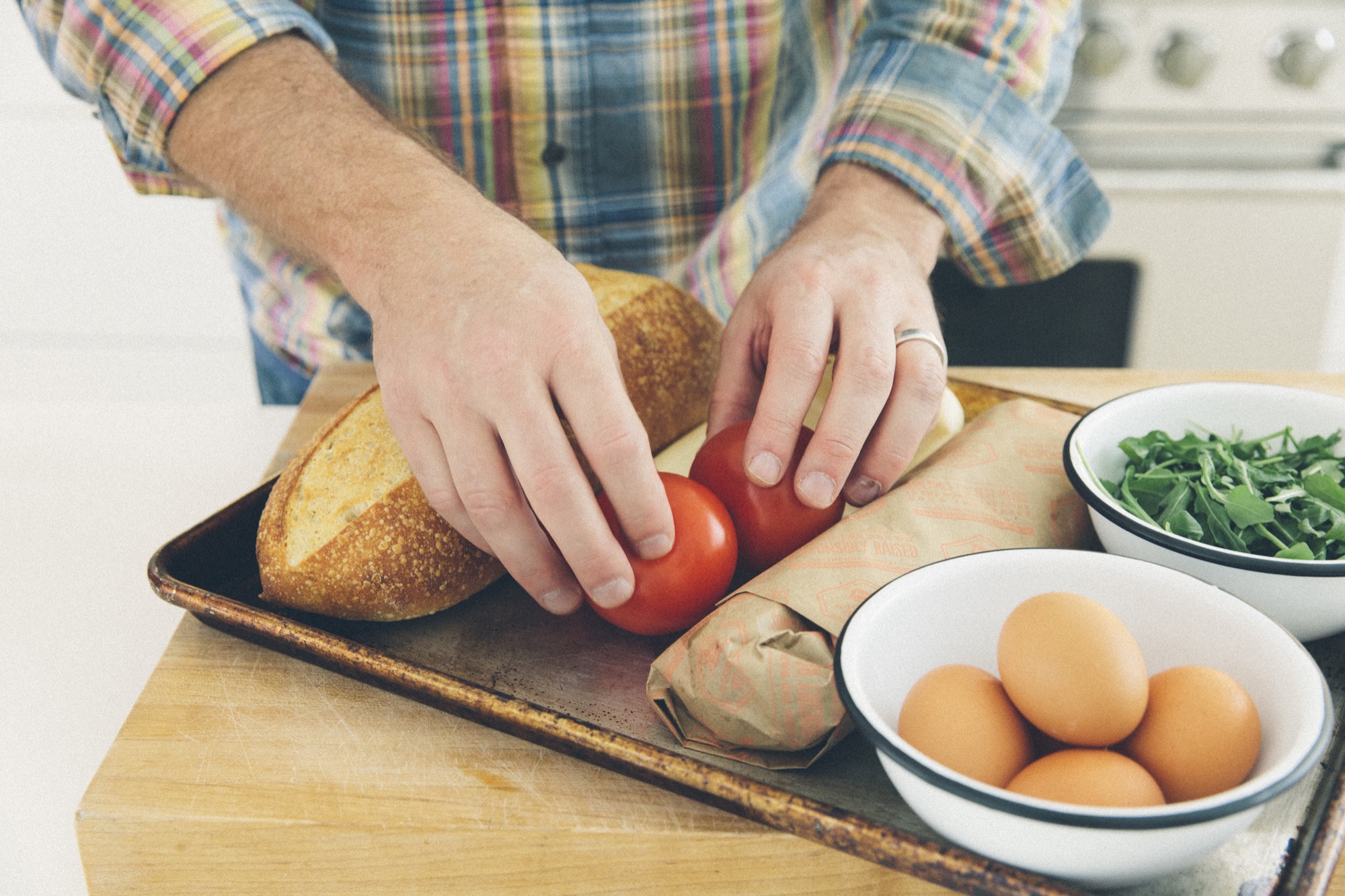
Kitchen memoirs
Each time I did have the courage to expose myself to something new, the experience had a profound impact on who I am today. At the time, it’s hard to know this. So you need to find courage to be out of your comfort zone.
When I was in college, I took a big risk plunging into a new experience. My father invited me to spend the summer with him and his wife on Block Island, Rhode Island. I had visited the island many times and loved it, but had never lived there, nor had I lived with my dad in quite some time. I was apprehensive. It was unfamiliar territory.
My father and his wife, Cynthia, live a life filled with the simple pleasures of food, wine, art, and entertaining—he, ever the consummate host, and she, chef extraordinaire. Thanks to his encyclopedic knowledge of wine, Dad has an interesting story to pair with whatever is in your glass, making every sip taste that much better. And Cynthia’s cooking is so effortless, the first bite makes you wonder how long it took her to make this food.
Life was relaxing at their comfortable house on a quiet dirt road. The sound of the crashing surf, trails to the beach or to town right out the back door. The bountiful garden grew every imaginable vegetable. When I close my eyes, I can still see the delicate squash, the bright green asparagus, the leafy arugula. It was an idyllic spot. A nostalgic place and a sense of life I wish I could revisit every year.
During that summer, I was exposed to something that has since become a defining part of who I am: good food. Cynthia subtly shared her love for food with me. She didn’t ask me to cook or to work in the garden or even to clean up the kitchen. Instead, she made delicious, satisfying food for me. All of the time. Each meal had ingredients from the garden, contributing to the fresh, delicious flavors. I don’t remember her actually showing me how to make any of it. I observed and asked questions. It was obvious she loved to cook. It was during that summer she instilled that same passion in me. I just didn’t know it yet.
"It was obvious she loved to cook. It was during that summer she instilled that same passion in me. I just didn’t know it yet."
The gifted Griswold
When I left the island to go back to school, Cynthia gave me a cast-iron pan. A Griswold #2, actually. I couldn’t have imagined then that a small pan would one day become such an essential part of my everyday life. When I dug out the Griswold years later, I realized the gift’s significance. It wasn’t just an amazing antique pan that’s incredibly hard to find nowadays, it was a gift that carried with it my love of food.
For the past fifteen years, I’ve been cooking all sorts of things—exploring different techniques, different combinations, growing my own vegetables, hosting dinner parties, challenging friends to cook-offs. I scour the latest cookbooks and food magazines for inspiration on what to make next. Cooking has become my passion, a gift that now I love to share with friends and family.
My favorite dish Cynthia would prepare in her cast-iron pan was an egg sandwich. I’m sharing how to make this sandwich with the hope it will push you, too, to try something new or bring back memories of a forgotten experience that may have made you who you are today. So here’s to summer. A time when the sun rises earlier, giving you extra time to sit, enjoy a tasty breakfast sandwich, and reflect. A time of renewal. A time to try new things. A process worth repeating over and over again. The reward is life-changing.
In Memoriam
I wrote this essay, which originally appeared in print in Alpine Modern 02, to honor my father and his wife, Cynthia. In the months since then, sadly, Cynthia has passed away. But I am enormously thankful she was able to enjoy this story—her story—and learn how much of an impact she had on me and my family. We love you, Cynthia.
Recipe: The Perfect Egg Sandwich
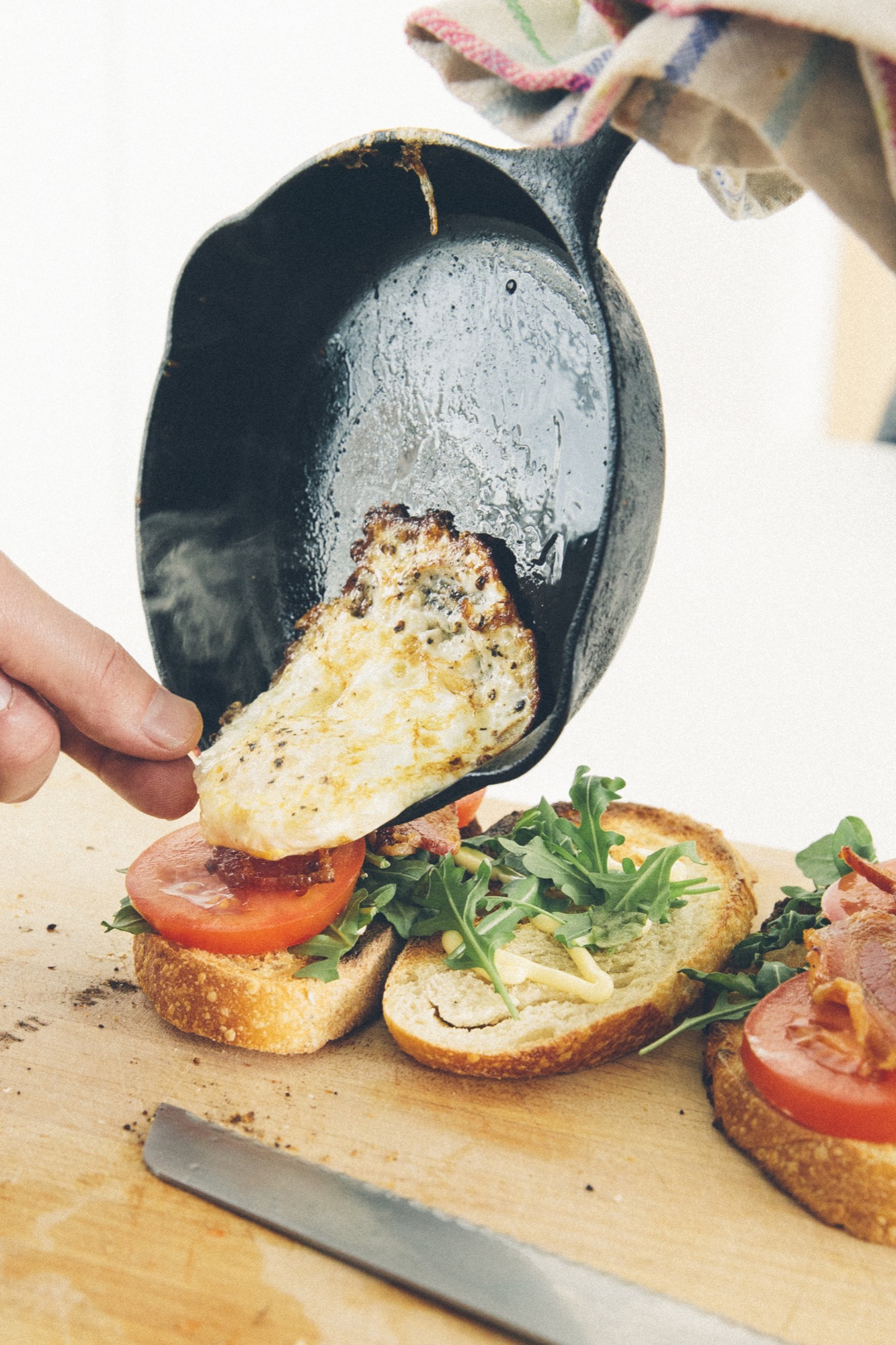
You need a small cast-iron pan...
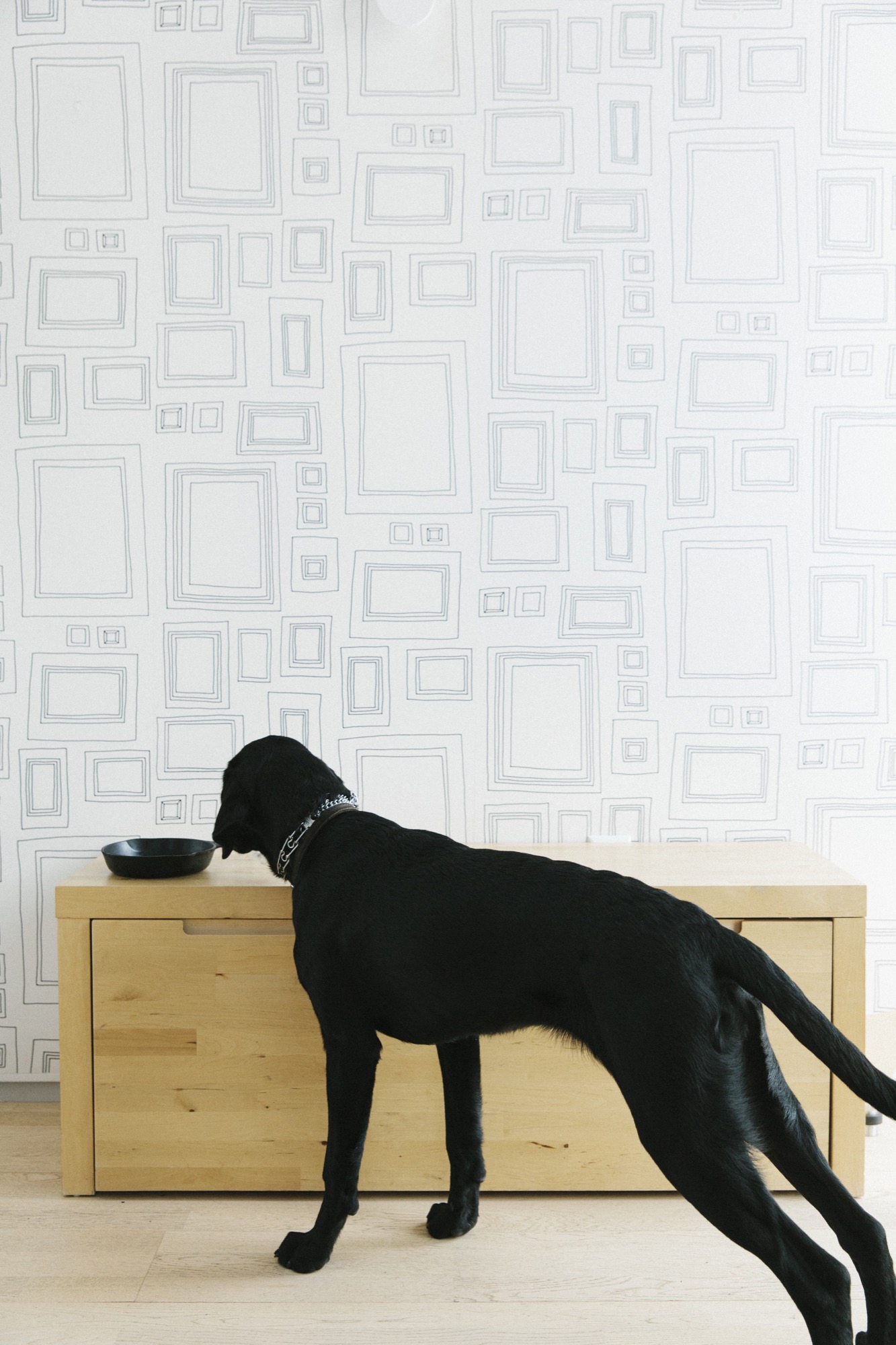
How to season a cast-iron pan
- Wash your pan in hot soapy water to remove any surface oils. Then heat in a 200oF (ca. 90oC) oven until completely dry. The heat will also “open up” the iron, making it more accepting of the seasoning.
- Apply a thin coat of flaxseed oil to the hot pan. Coat it entirely. You’ll want to use an oven mitt since the pan will be hot.
- Wipe away all of the remaining oil. There will still be a very thin coat on the pan, but it should not appear oily. Using too much oil will result in streaks and a sticky surface.
- Bake the pan upside down in a 500º F (ca. 260º C) oven for 30 minutes. Then shut the oven o and let the pan cool inside. Heating the oil will cause it to create polymer chains, making for a dark, smooth surface.
- Repeat this seasoning process at least three times before cooking in a brand-new pan. The seasoning will continue to build as you use the pan, becoming darker and increasingly nonstick. The pan will also be easier to clean as the seasoning layers build.
Go Wild
Wilderness to table: Serve what nature offers where you are
Forage the forest floor, fish the mountain creek, and relearn respect for nature’s abundant gift of authentic ingredients. Following in the footsteps of culinary ground-breakers like Chef René Redzepi (Noma, Copenhagen, Denmark) and Chef Magnus Nilsson (Fäviken, Åre, Sweden), Alpine Modern wanders into the woods . . . where the wild things are.
The wilderness-to-table movement is the antithesis of getting any product from anywhere in the world anytime, in season or not. Hunting and gathering for your meal du jour takes advantage of what grows or lives in the place where you are, at the time an ingredient is ripe and ready. The food you eat is your connection to the present and to where you are in the world.
"The food you eat is your connection to the present and to where you are in the world."
Elevated Localism
Foraged food takes the concept of eating local yet further. All around the world, entire restaurants are now based on the principle of serving what nature offers right outside the door — the menu written by place and time. Chef René Redzepi at restaurant Noma in Copenhagen, Denmark, is conceivably the progenitor of a culinary counterculture that looks to the local landscape to rediscover an innately authentic fine cuisine, made from what is.
Seasons once again have significance. So, what to serve during the winter months, if FedExing in- gredients from halfway around the world conflicts with your food philosophy? Our ancestors’ preser- vation methods—pickling, jarring, canning, curing, kippering—have dwindled to all but forgotten skills. Magnus Nilsson, head chef of Fäviken Magasinet restaurant in Northern Sweden and au- thor of the complementing cookbook Fäviken, is a master curator of these past techniques, carefully maintaining the traditions like a dying language.
"Seasons once again have significance."
A Dish, Discovered
Recipes and shopping lists are needless in foraging for nature’s edible glory, since searching the forest for a particular wild vegetable could prove a foolish attempt. Look around instead, mind wide open. Awareness comes before inspiration.
"Recipes and shopping lists are needless in foraging for nature’s edible glory, since searching the forest for a particular wild vegetable could prove a foolish attempt."
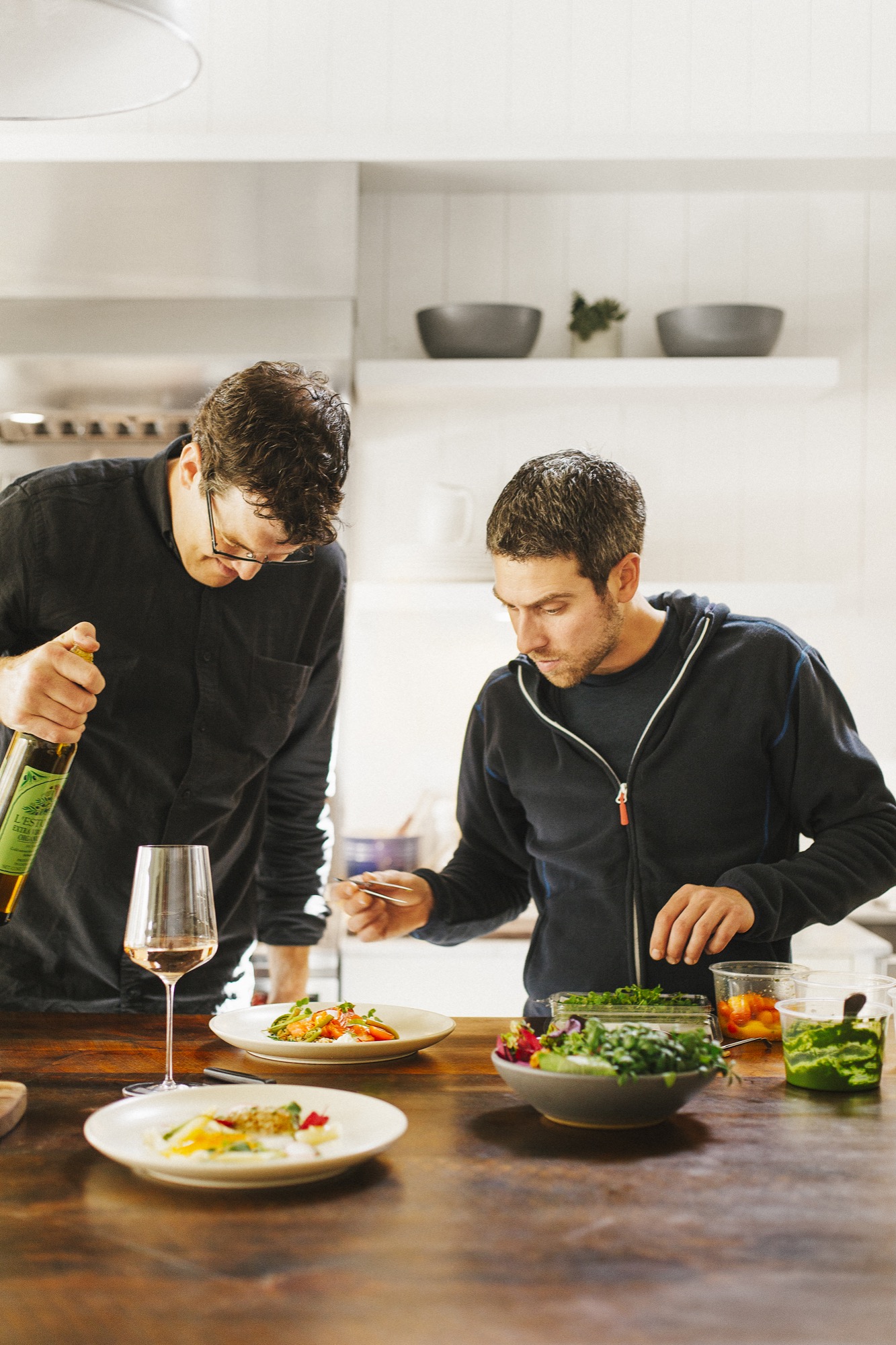
Granted, rambling meadows, curious what you may cook, can be daunting, whether you’re expecting friends over or feeding your über-exclusive restaurant’s patrons. The unknown, the serendipity, the exploratory idea of discovering, aha, it’s porcini for dinner, become part of the adventure. What’s more, wild ingredients will vary widely, and you may not find perfect bunches of white asparagus under a spruce tree. Nevertheless, anytime you pull an ingredient out of the ground or catch it from the creek, you are going to respect its more distinct, more identifiable flavor the more for it.
Alpine Modern’s resident culinary mastermind, Colin Kirby (El Bulli, Spain, 2008), knows to step out of the way of fresh, pure ingredients. If life deals him morels, he lets them shine by applying minimal technique.
Here, the mindful chef curates a spread of dishes and drinks that taste of the here and now. Go wild with him. △
Wilderness-to-table recipes
White Asparagus and Morel Salad
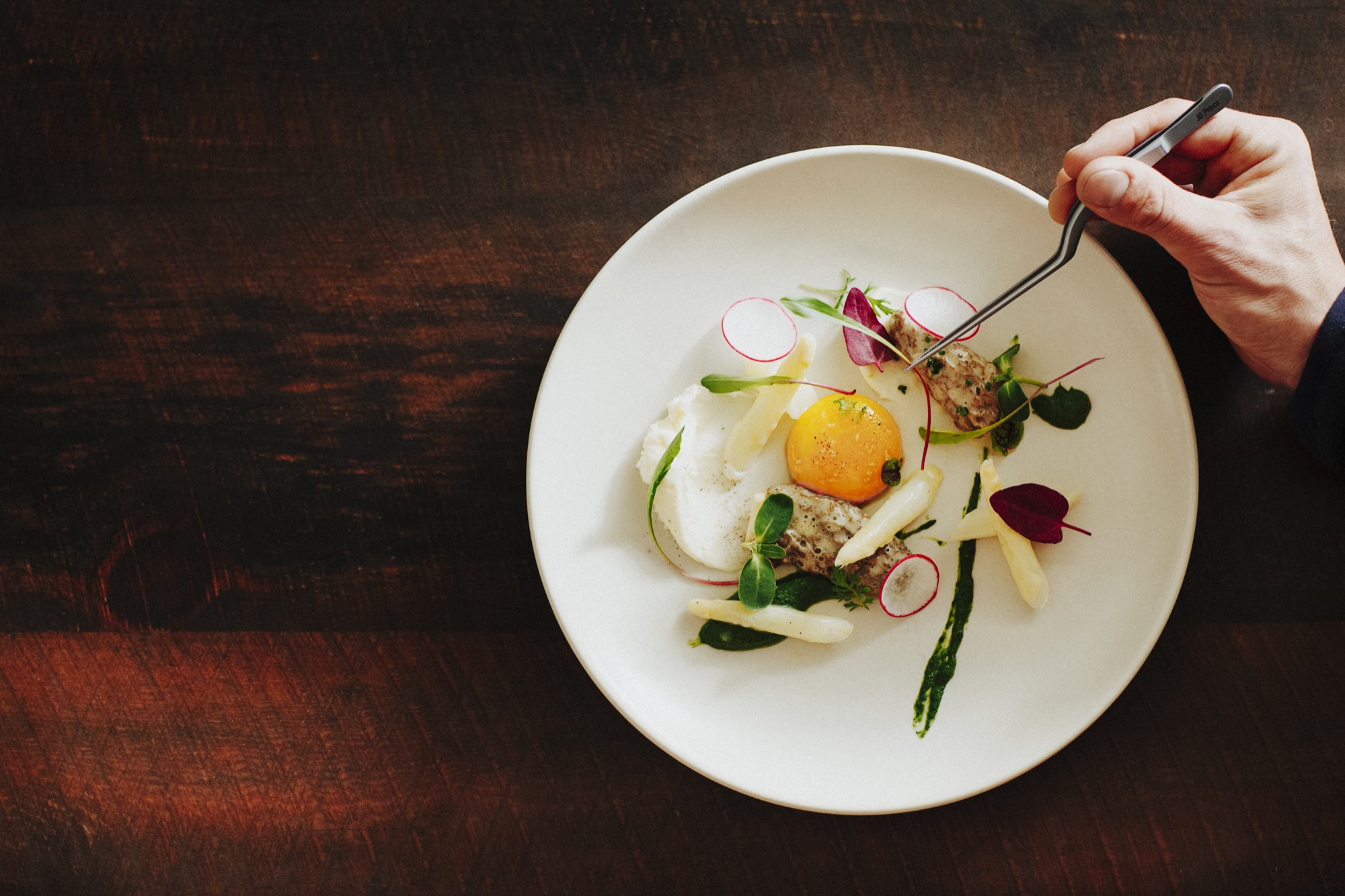
A delicate side dish with morels poached in beurre monte, asparagus and egg on ramp top puree. Recipe »
Smoked Trout Salad
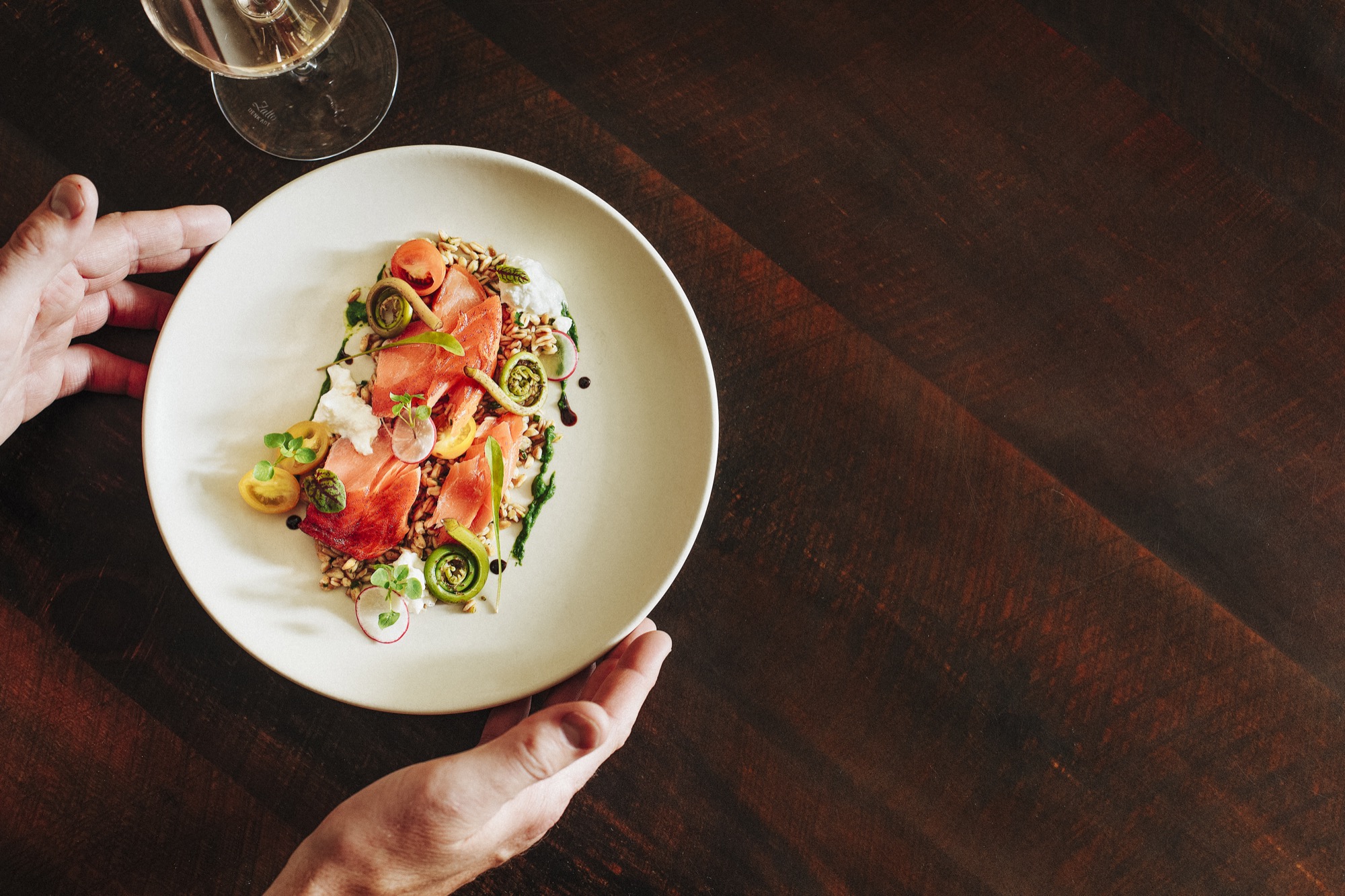
A wild and fresh dish with your smoked catch and fiddlehead ferns with its great woodsy, almost bitter flavor reminiscent of the forest floor. Recipe »
Alpine Fizz
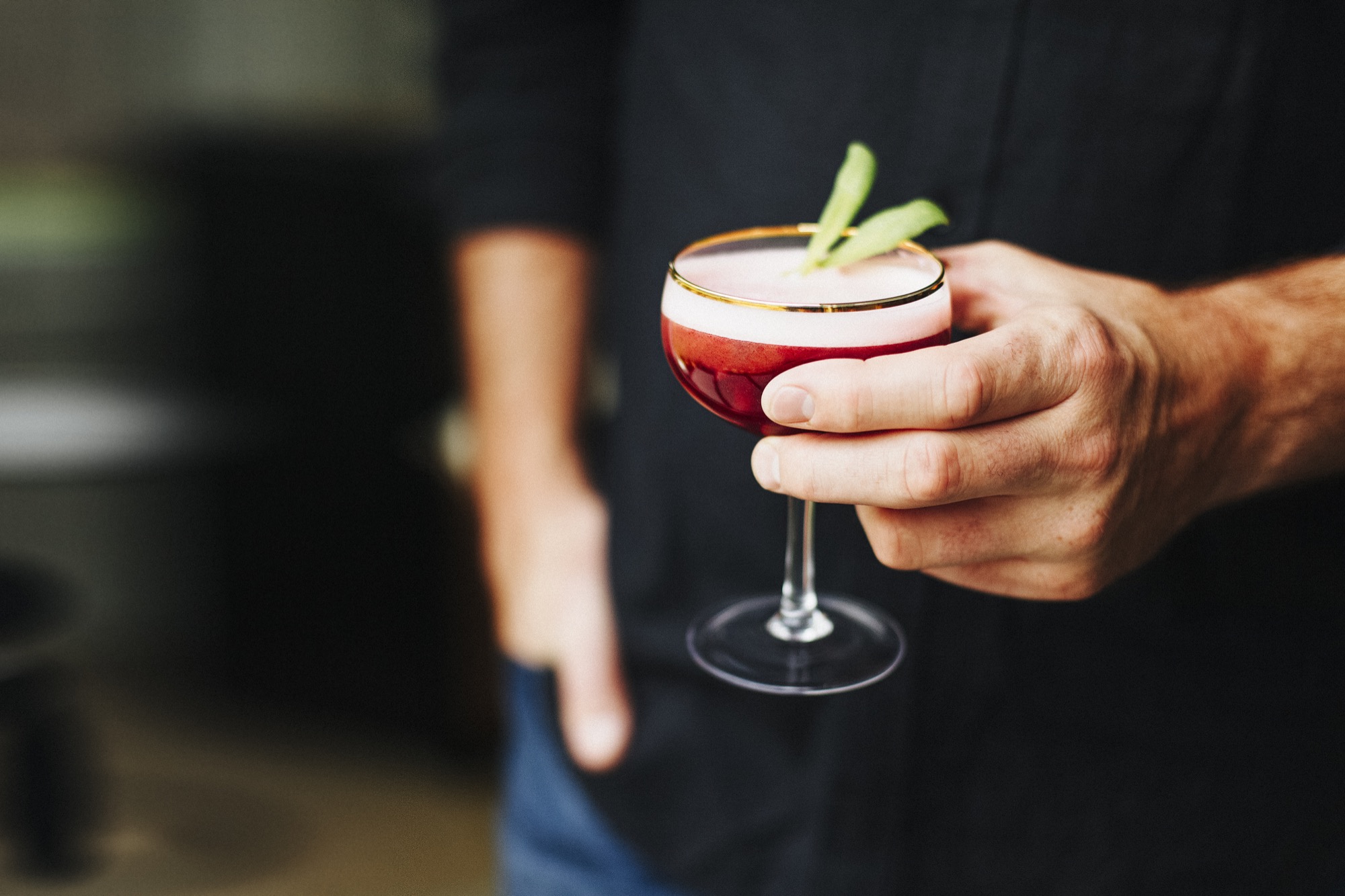
A fizzy gin cocktail with homemade huckleberry-sage syrup. Recipe »
Recipe: White Asparagus and Morel Salad
A delicate side dish with morels poached in beurre monte
Ingredients
- 6 white asparagus
- 6 morels (cleaned)
- 2 radishes
- 1 bunch ramp tops
- 1 egg yolk
- 1 shallot
- 2 pounds (907 grams) butter (cubed)
- 1 tablespoon (15 milliliters) water (for beurre monte)
- 4 ounces (113.3 grams) Delice de Bourgogne cheese
- Dandelion greens
- Sheep sorrel
- Red orach
- Purslane
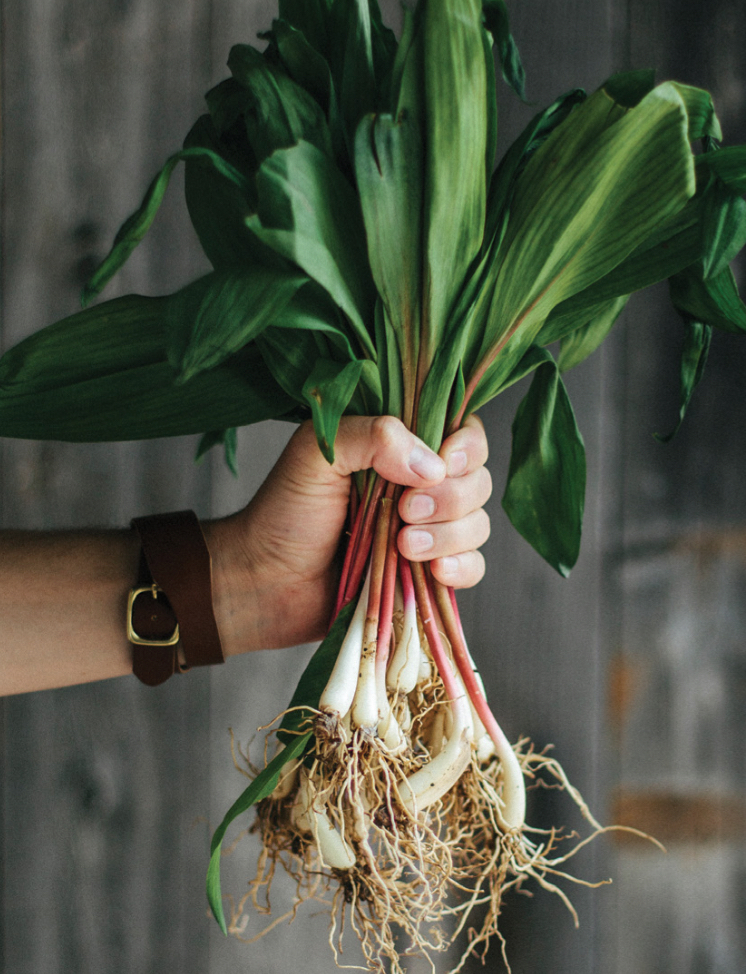
For the white asparagus
Trim away the woody ends and blanch the white asparagus in salted boiling water until cooked (three minutes). Transfer to an ice bath. Once cool, cut each piece into three small pieces (batons). Reserve for later.
For the ramp top puree
In a saute pan, add the diced shallot and one tablespoon (15 grams) of butter to hot pan. Sauté shallot until translucent. Add cleaned ramp tops and cook for five to seven minutes. Add cooked mixture to blender and puree on high for thirty seconds. Chill and reserve.
For the beurre monte
Add one tablespoon (15 milliliters) of water to saucier pot, heat, and slowly add the cubed butter. Whisk constantly until water and butter have emulsified. Season generously with salt and pepper. Reserve on a simmer.
For the egg yolk
Cook for one hour at 63.5º C (146º F) in a mixture of grapeseed and olive oil.
To Finish
Gently poach the cleaned morels in the beurre monte mixture for four
minutes. Wipe off any excess butter. Put on the plate.
Toss the white asparagus in a small amount of the warm beurre monte, and put on the plate.
Spoon the ramp top puree alongside the morels and white asparagus.
Place the Delice De Bourgogne on the plate.
Add warm egg yolk, sliced radish, dandelion greens, red orach, and purslane.
Recipe: Alpine Fizz
A gin cocktail with homemade huckleberry-sage syrup
Ingredients
- 1½ ounces (44 milliliters) CapRock Gin
- ½ ounce (15 milliliters) Braulio
- ½ ounce (15 milliliters) huckleberry-sage syrup *(see additional recipe)
- ¾ ounce (22 milliliters) lemon juice
- 1 egg white
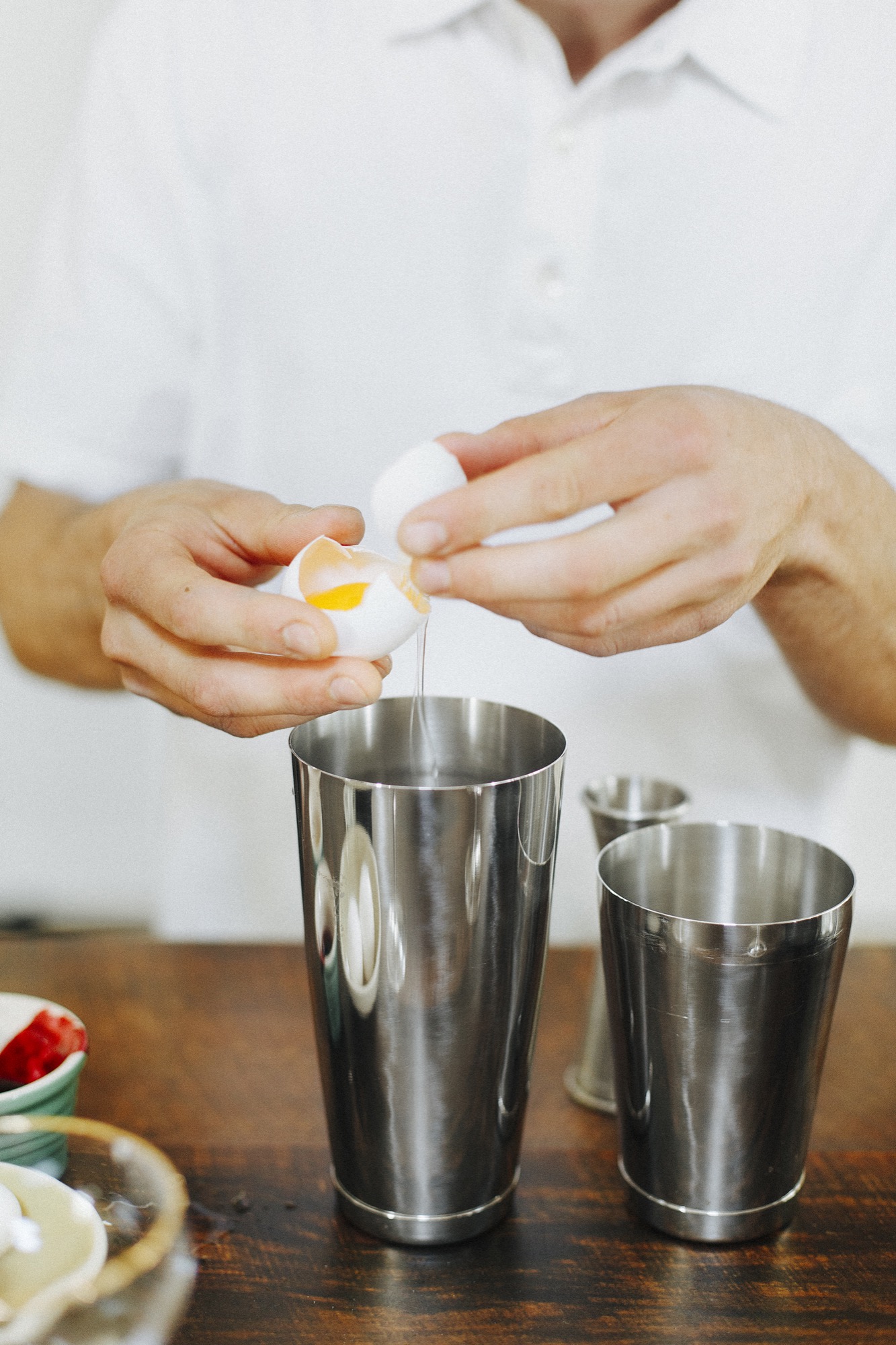
Combine all ingredients in a shaker tin.
Dry shake ingredients without ice to aerate egg white.
Shake ingredients with ice to chill and dilute.
Using a hawthorne and a ne strainer, strain cocktail into a chilled coupe.
Garnish with fresh herbs and/or huckleberries.
For the huckleberry-sage syrup
Combine equal parts huckleberries and granulated sugar into a sauce pot.
Bring to a boil and simmer just until the huckleberries begin to burst.
Add sage leaves and continue to simmer gently.
Once infused, remove sage leaves and discard.
Place syrup into a blender and blend until smooth.
Strain syrup with a strainer and refrigerate until cool.
Final product should be thick but pourable, adjust with water if necessary.
Recipe: Smoked Trout Salad
Home-smoked fish alongside woodsy fiddlehead ferns
Ingredients
- 1 cup (236.5 grams) salt
- ⅓ cup (71 grams) sugar
- 8 ounces (227 grams) emmer wheat (farro)
- 1 lemon
- 1 bunch parsley
- Fresh cherry tomatoes
- Chives
- Sherry vinegar
- 8 fiddlehead ferns
- 6 ounces (170 grams) fresh cheese (burrata)
- Dandelion greens
- Chickweed
- Red ribbon sorrel
- Wild wood sorrel
- Yarrow
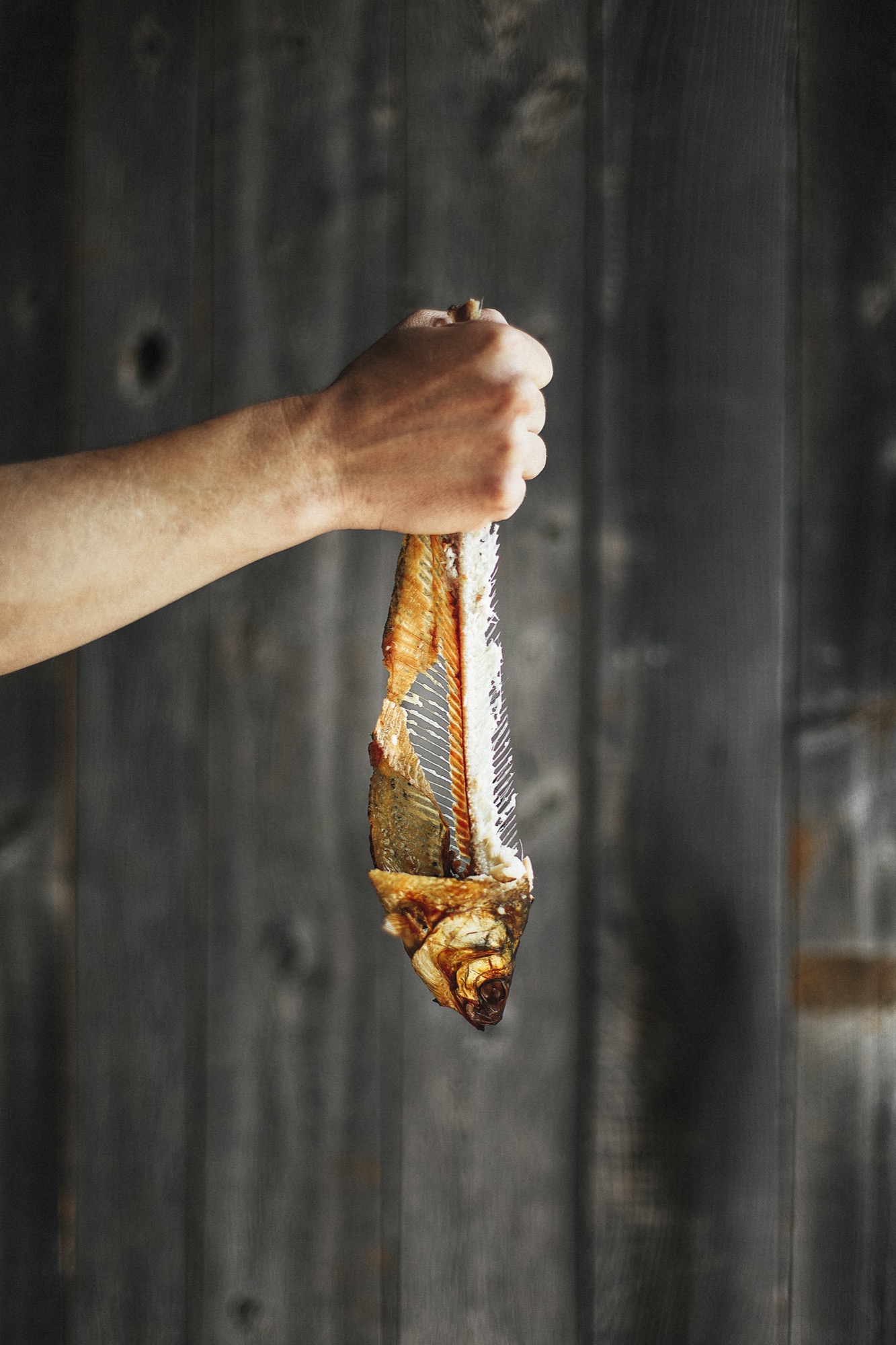
For the smoked trout
Combine one cup salt (236.5 grams) and one-third cup (71 grams) sugar and sprinkle evenly over the small filleted fish. Refrigerate for eight hours to cure. Remove from fridge and rinse under cold water. Refrigerate the fish overnight, uncovered. In the morning, light the charcoal grill (preferably using applewood and charcoal). Once the coals are hot, push them to one side of the grill. Place a tray with ice next to the coals. Put the grill grate on top of the charcoal and the tray of ice. Set the trout on a metal baking pan directly above the tray of ice and “smoke” the trout for ten minutes.
For the farro
Put the farro in a pot and fill with cold, salted water until the farro is submerged. Bring to a boil and simmer. Cook for fifteen minutes until the farro is tender. Strain. Season generously with lemon juice, sherry vinegar, salt, and pepper. Add sliced tomatoes, sliced chives, and parsley.
For the fiddlehead ferns
Remove the top portion of the stems and blanch in a large pot of salted, boiling water for a eight to ten minutes, until tender. Place in a small ice bath to stop the cooking process.
To finish
Spoon the nished farro onto the plate.
Add the smoked trout on top.
Garnish by adding the fresh farm cheese, seasoned fiddlehead ferns, dandelion greens, chickweed, sorrels, and yarrow.
Drizzle with Extra Virgin Olive Oil.
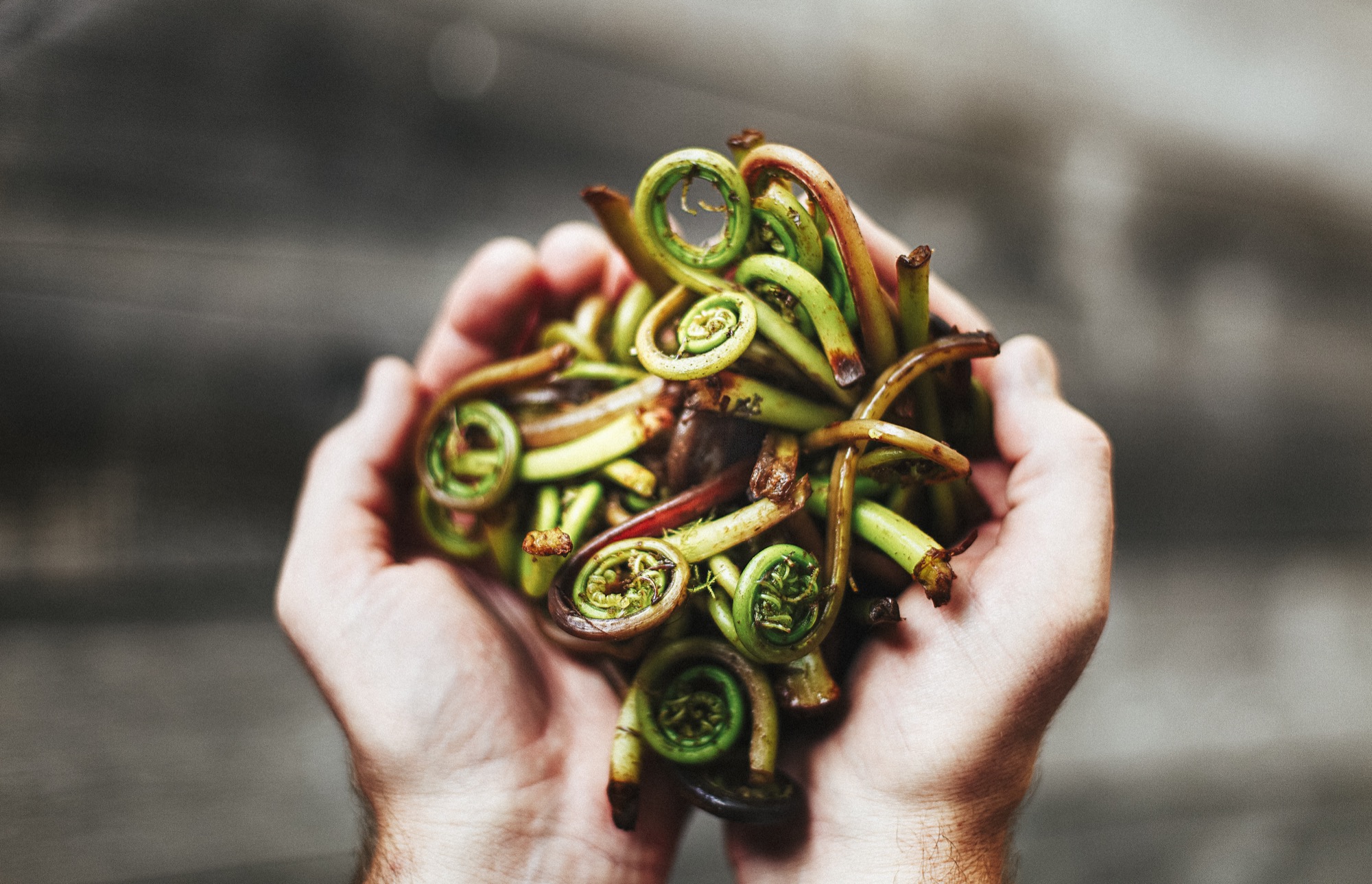
Alpine Modern Chef Colin Kirby on fiddlehead ferns:
The ingredients featured in these pages make all the difference. Wild, fresh, and foraged flavors have become a staple in the culinary world, and this dish reflects that point. A main component to the smoked trout dish is the fiddlehead fern. The ferns have a great woodsy, almost bitter flavor reminiscent of where they came from: the forest floor. Their texture is superb, providing an added bite to the creaminess of the trout and fresh cheese. Technically, they are the furled fronds of ferns. They are incredibly healthful as well, high in fatty acids. Fiddlehead ferns can also be pickled and eaten anytime.




